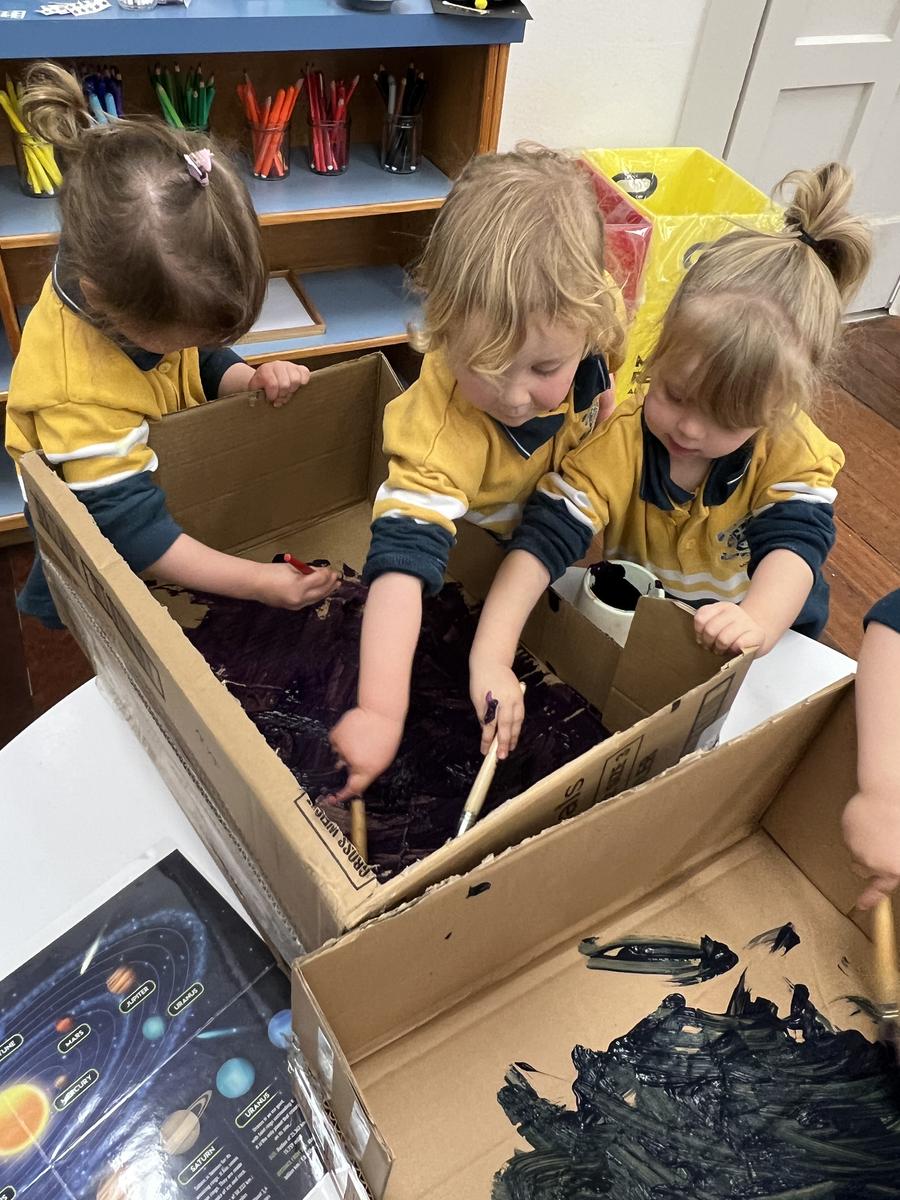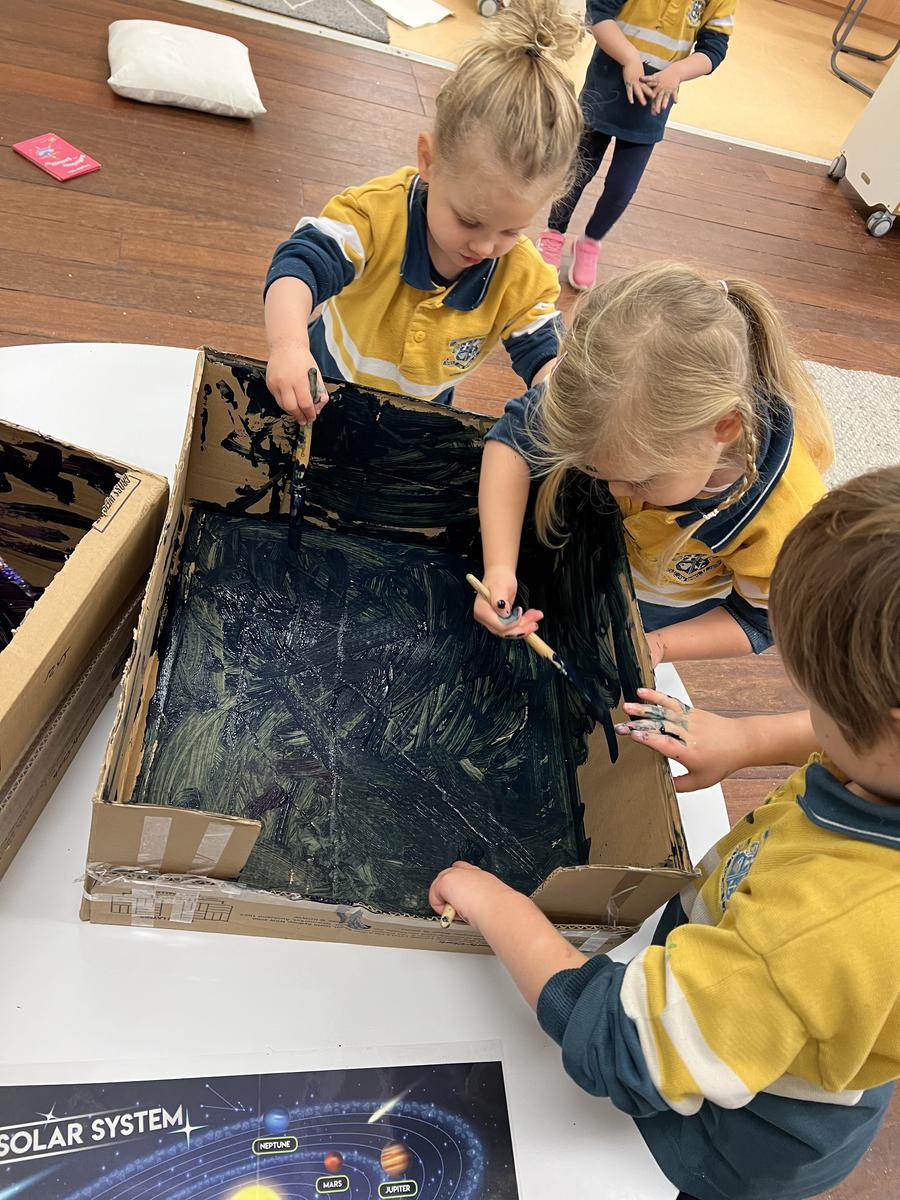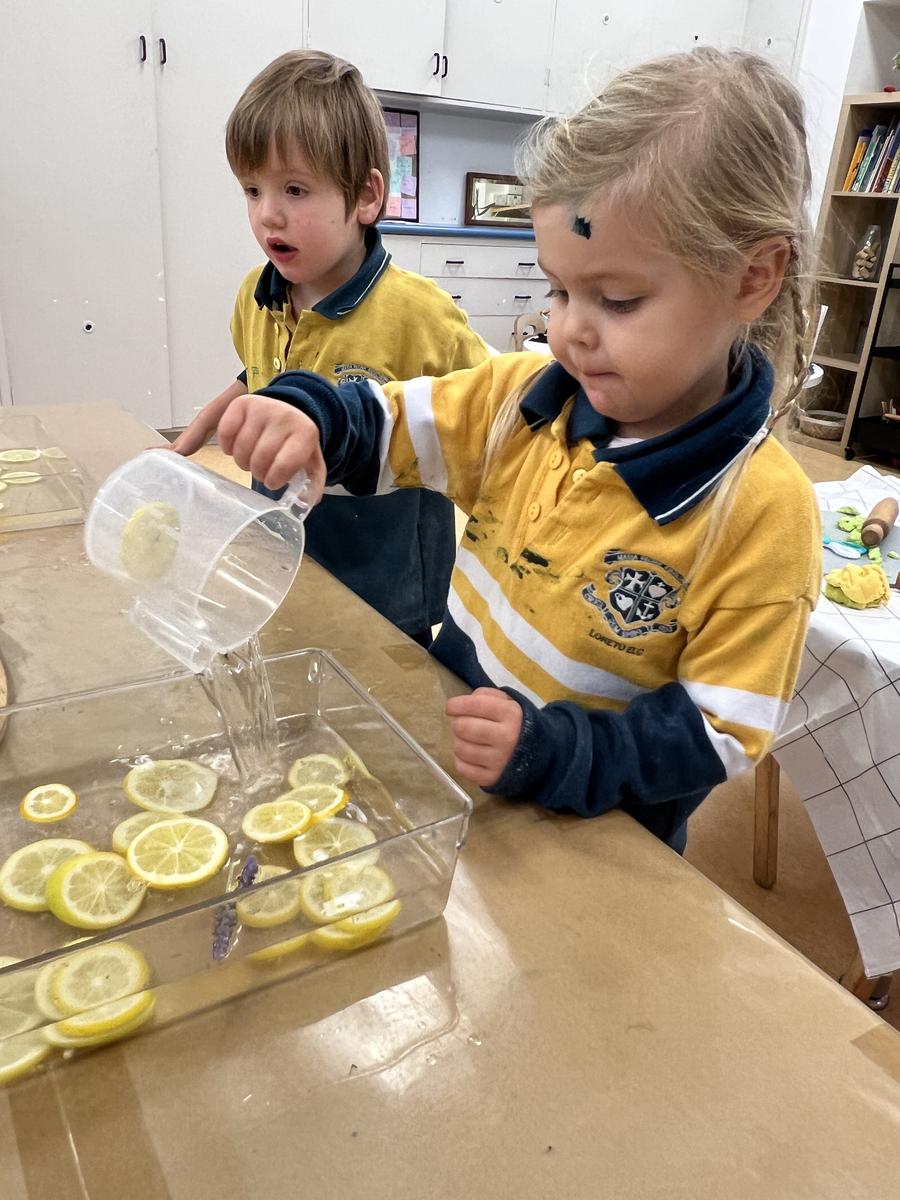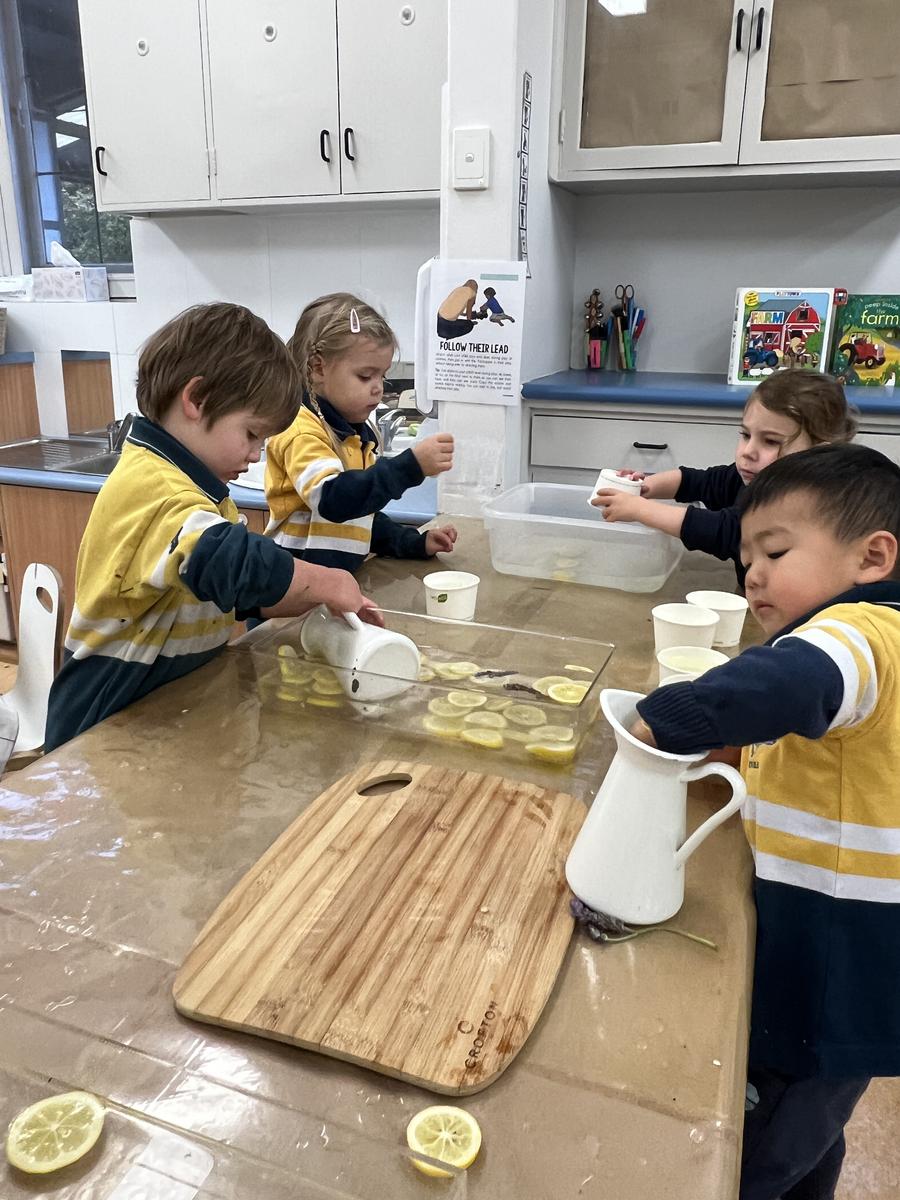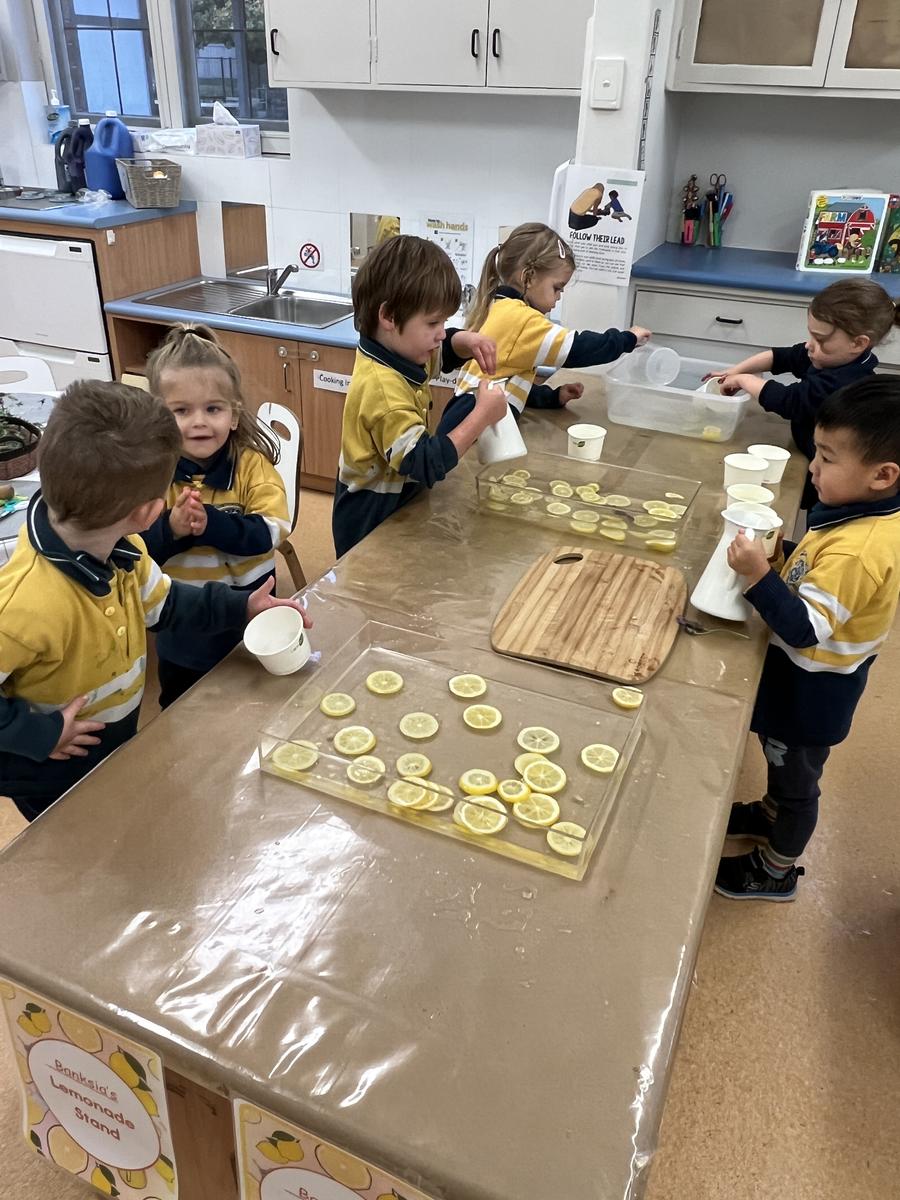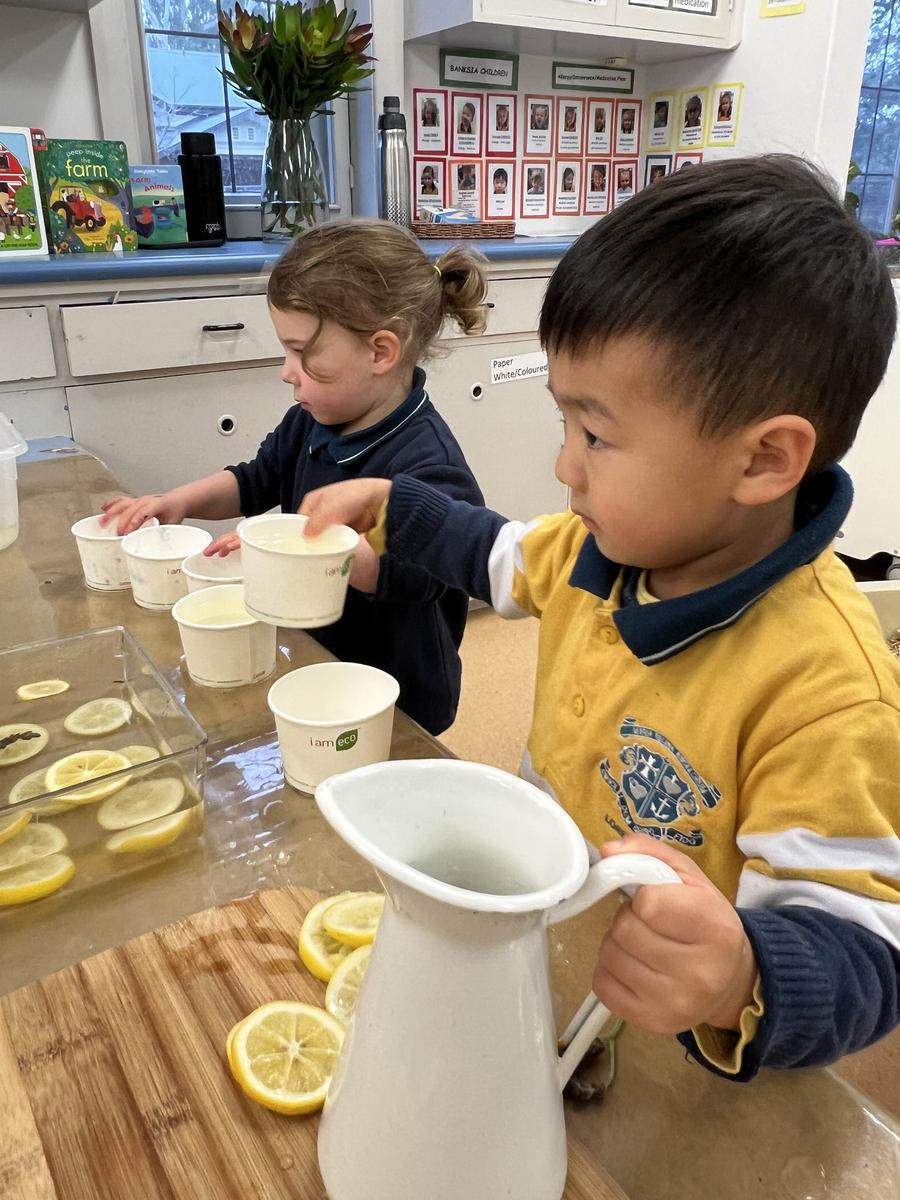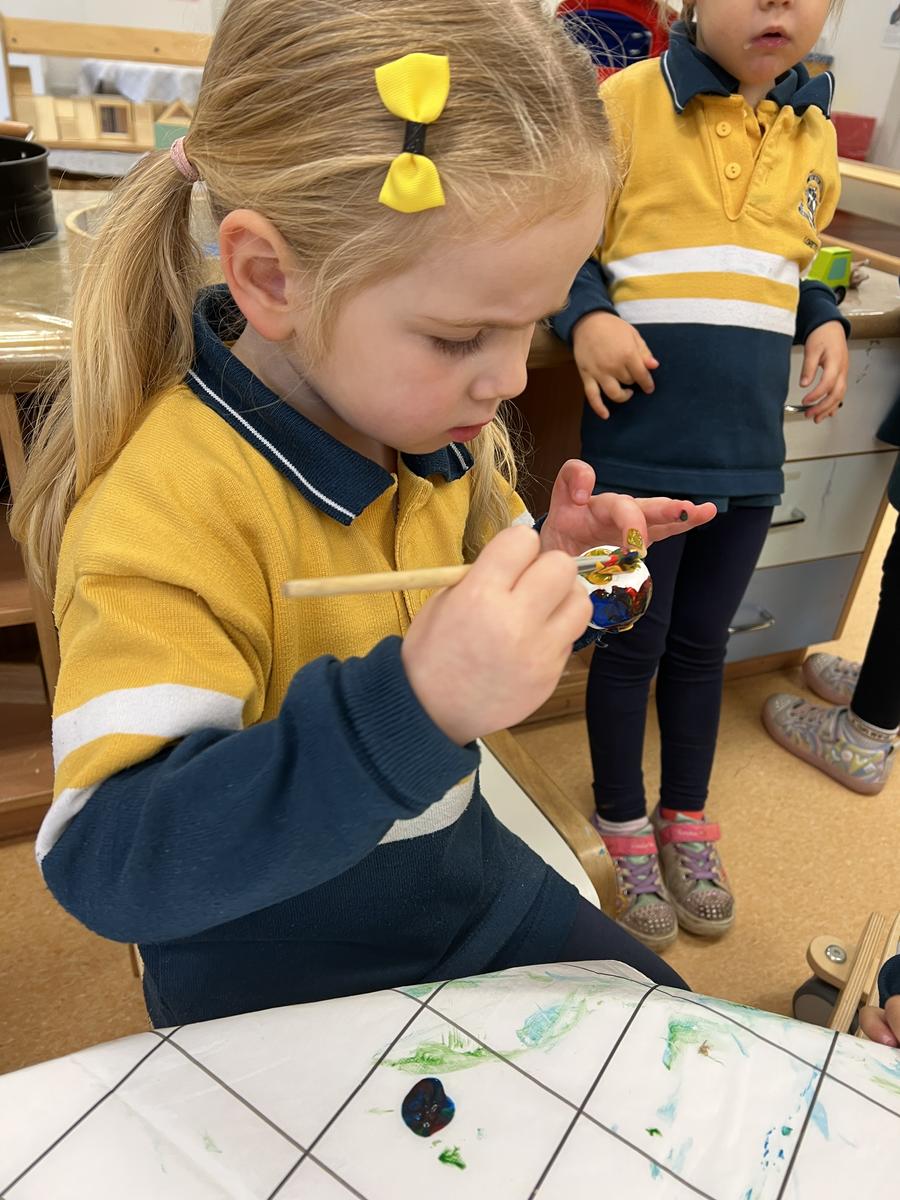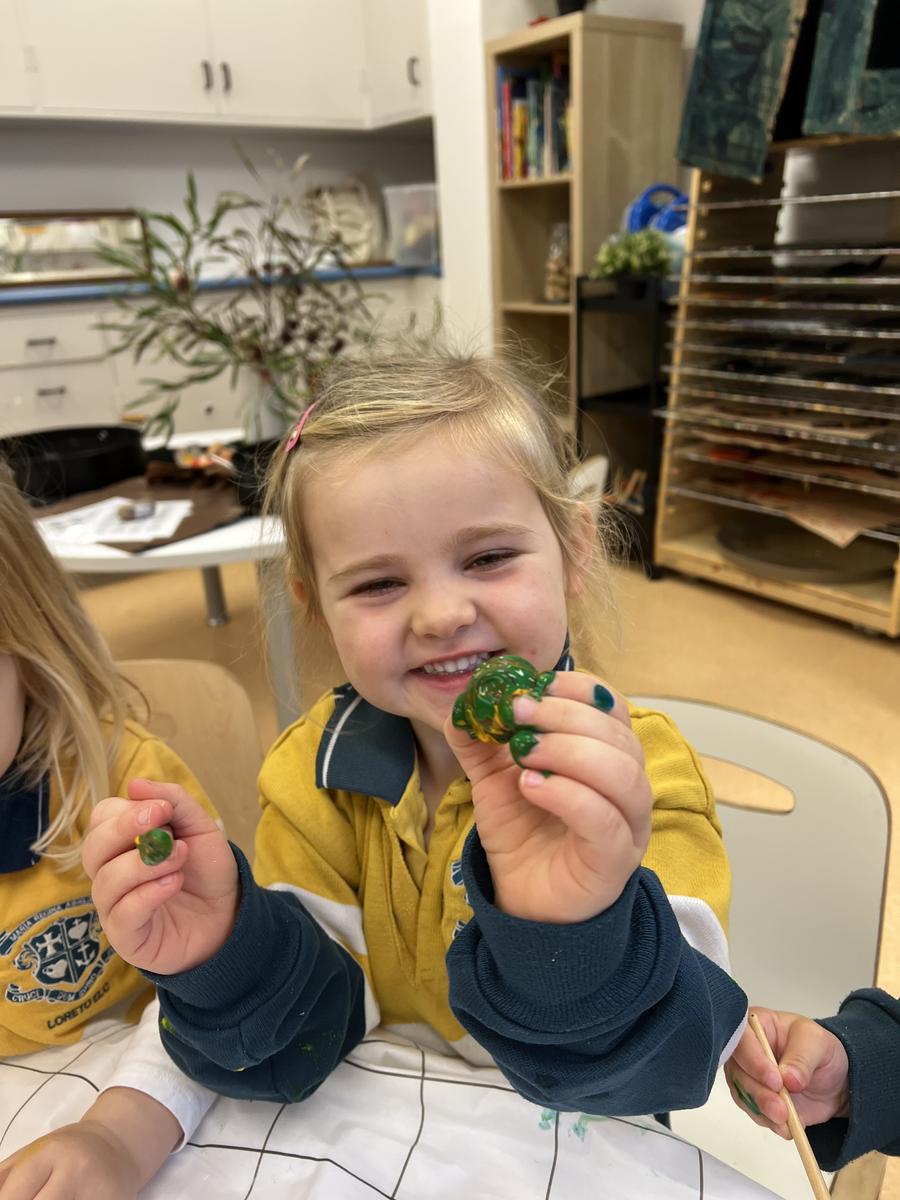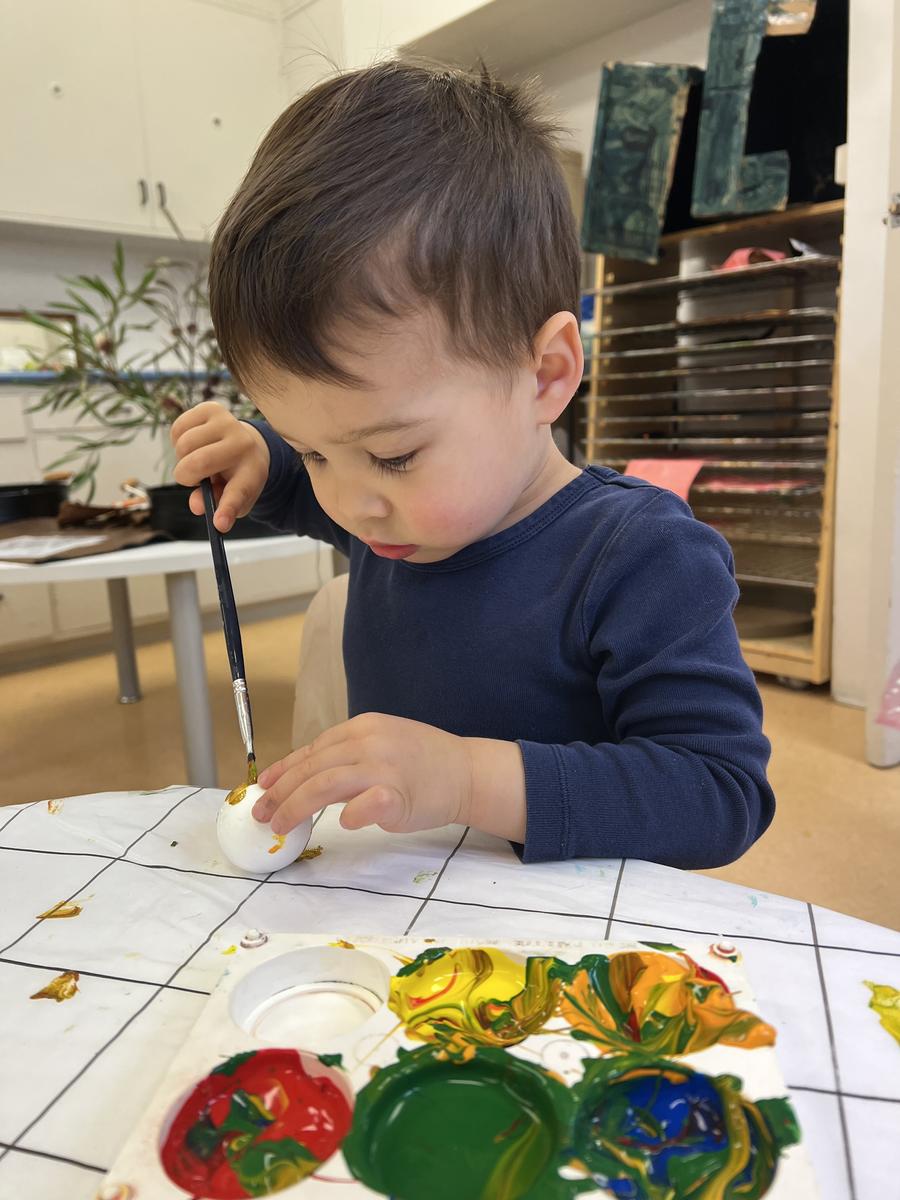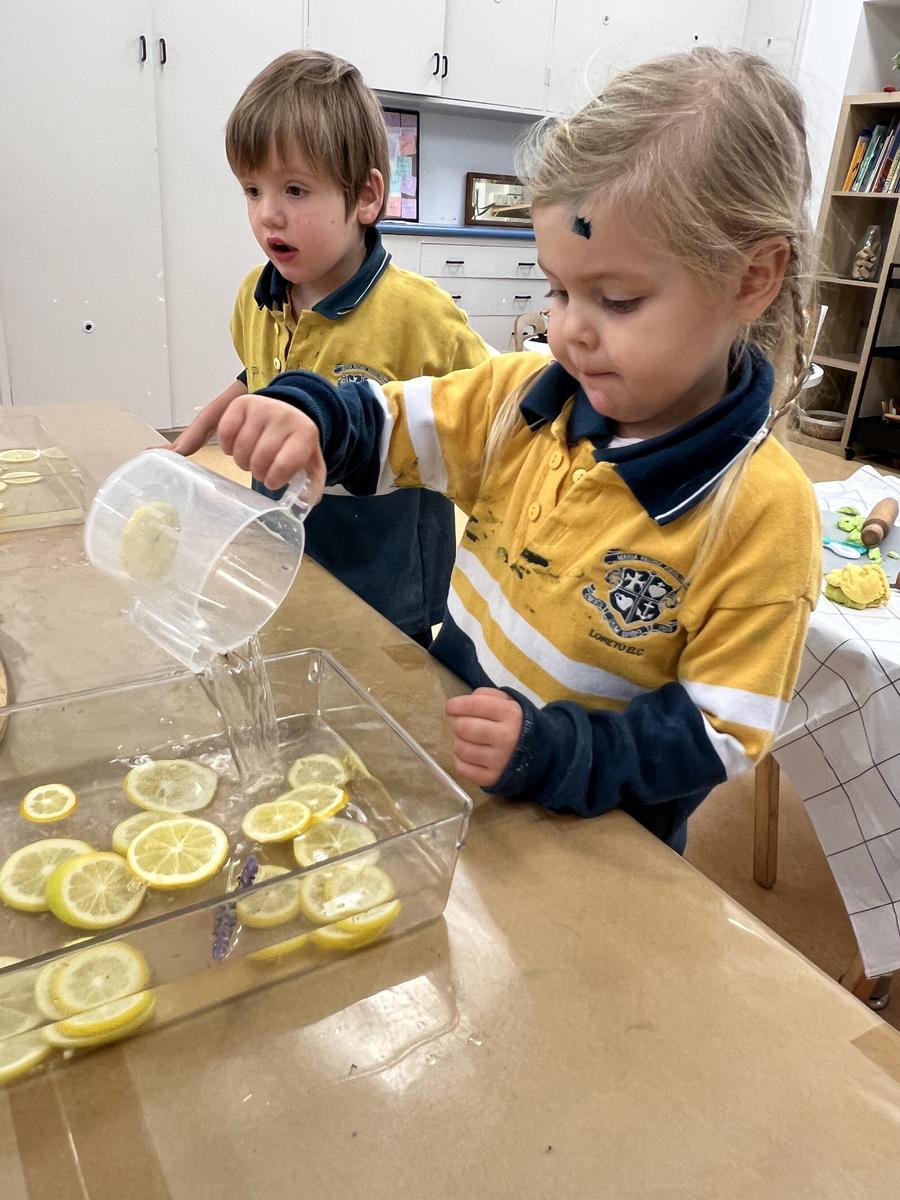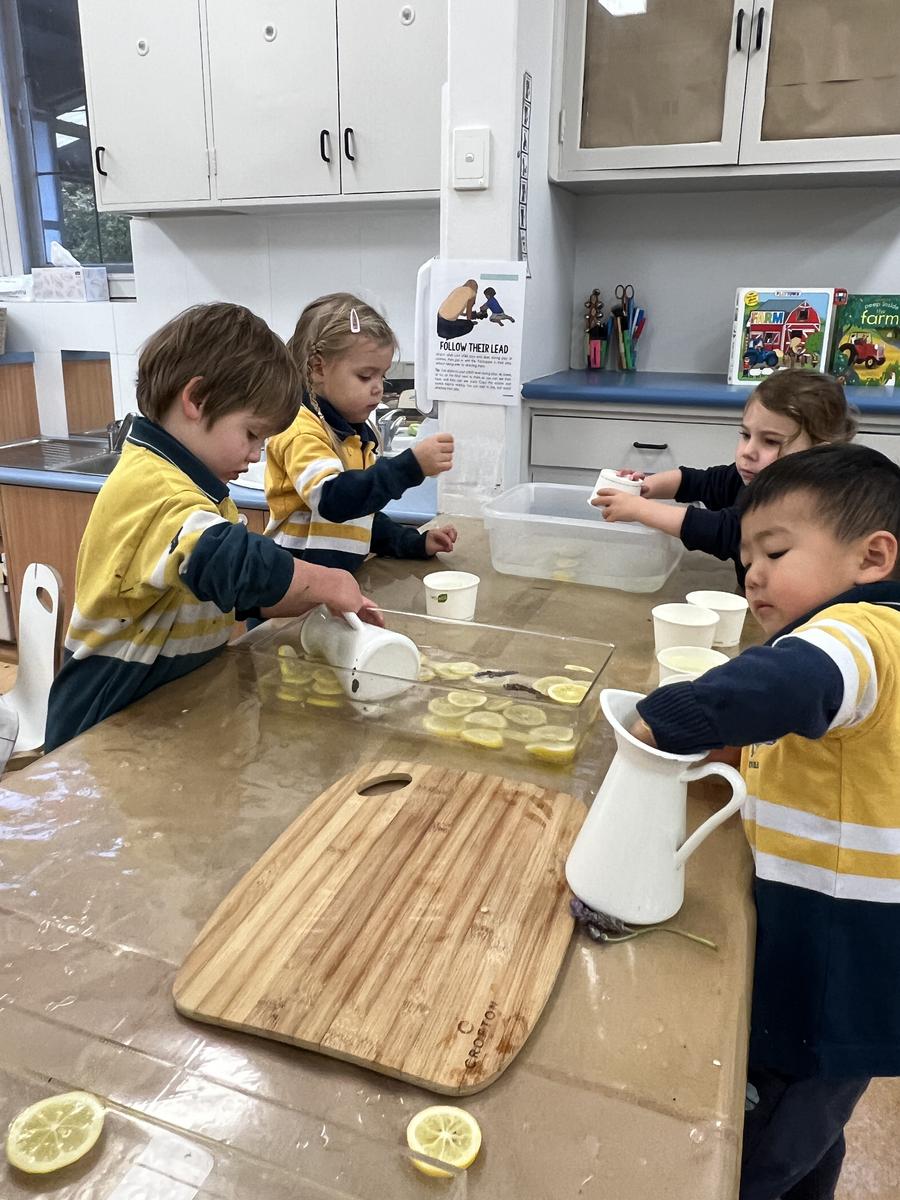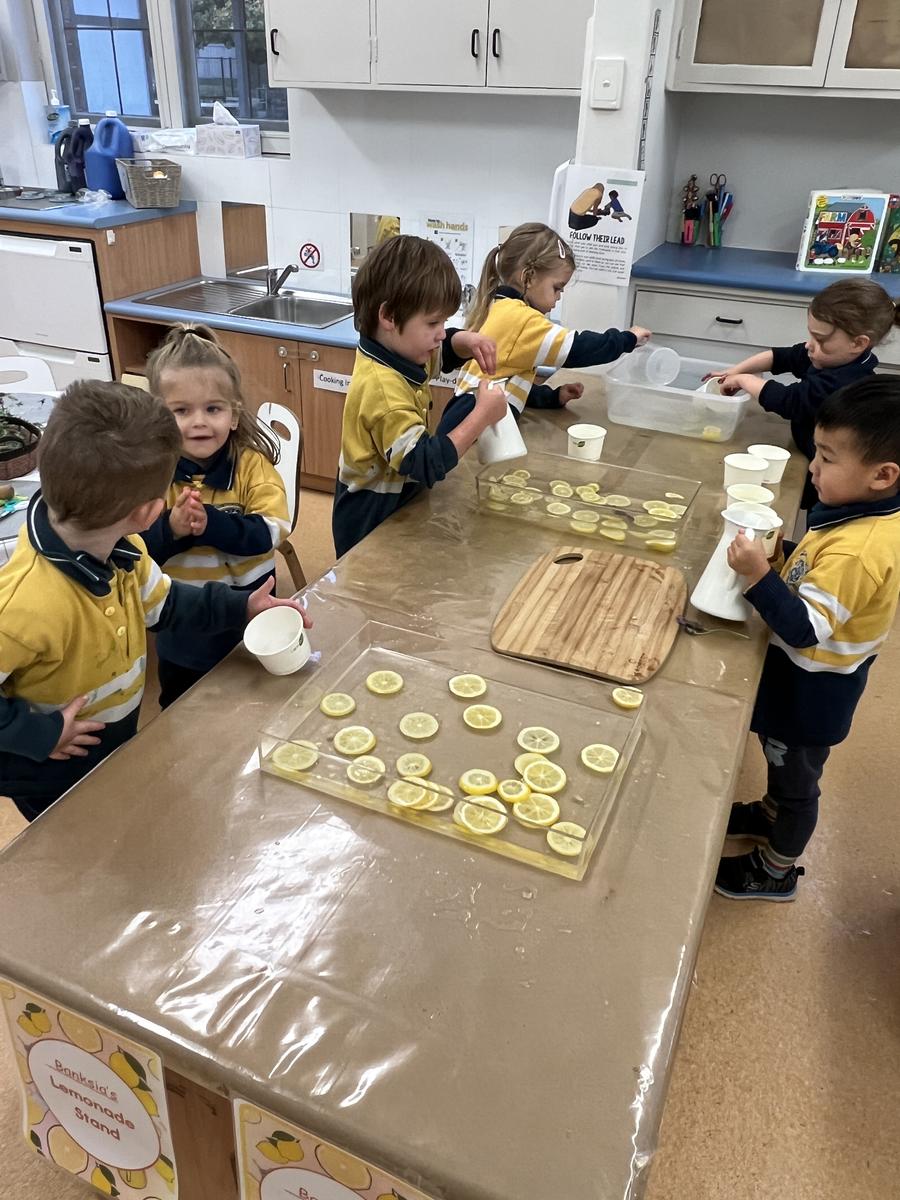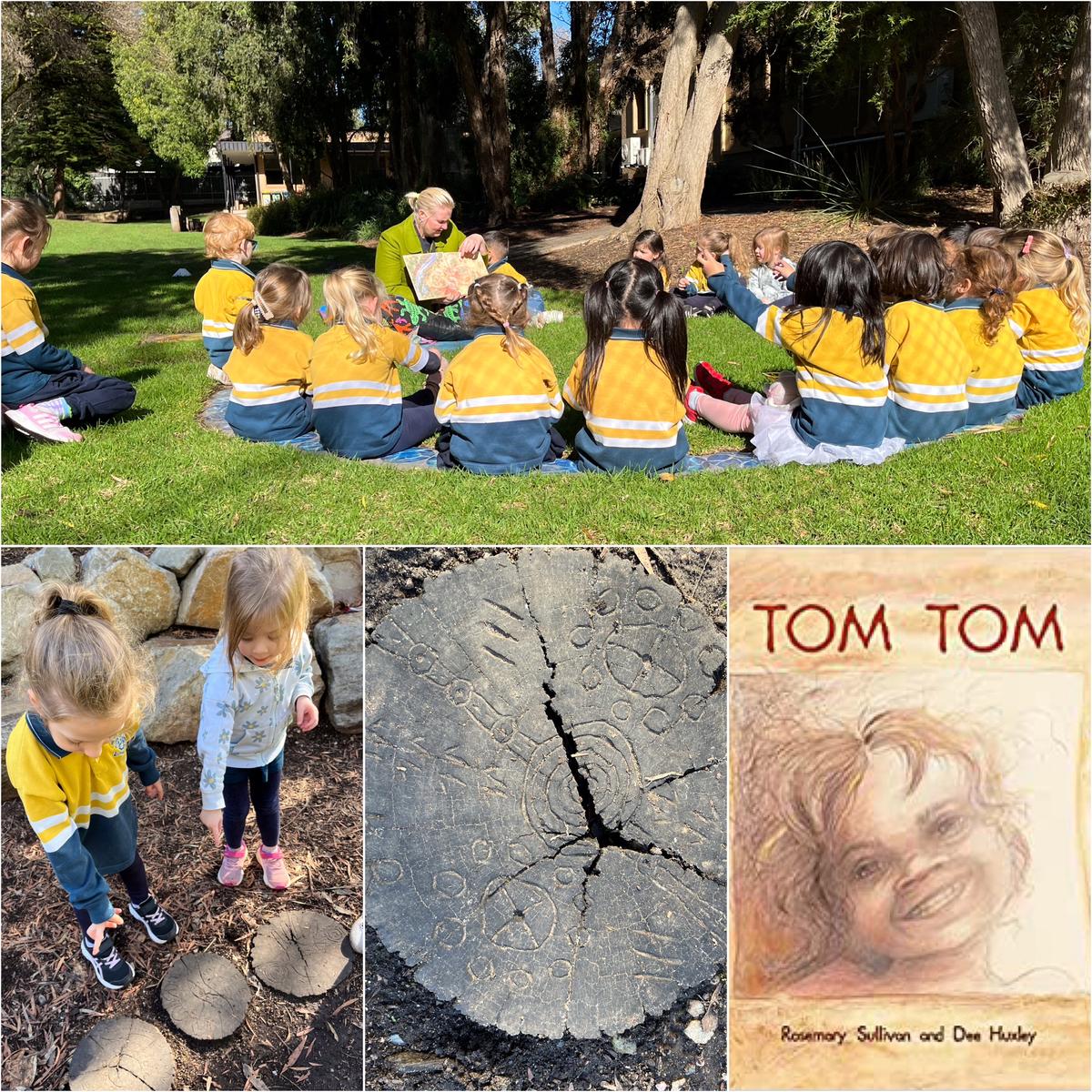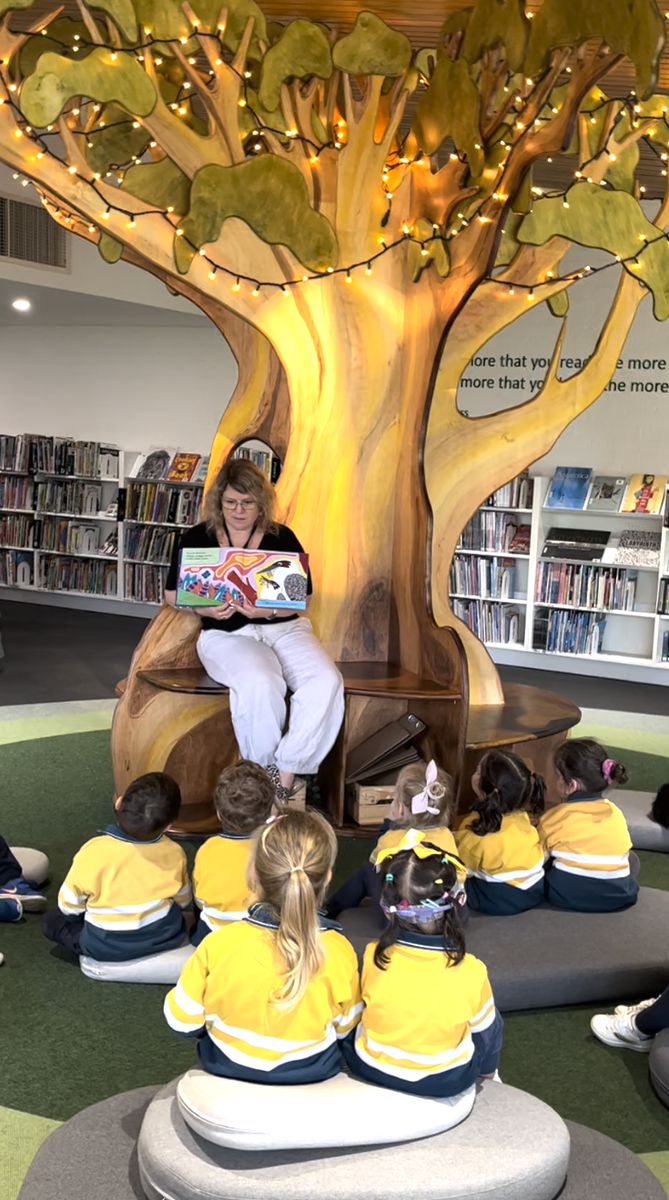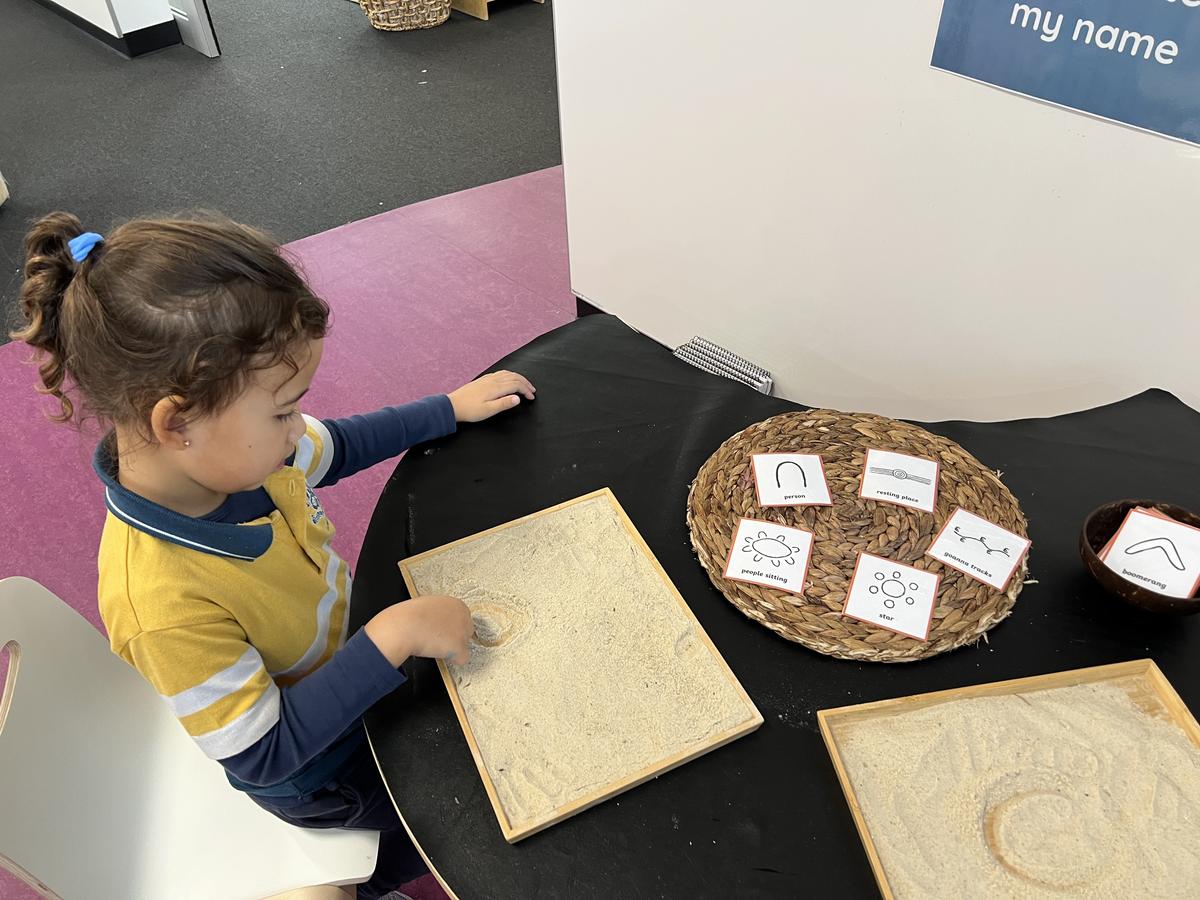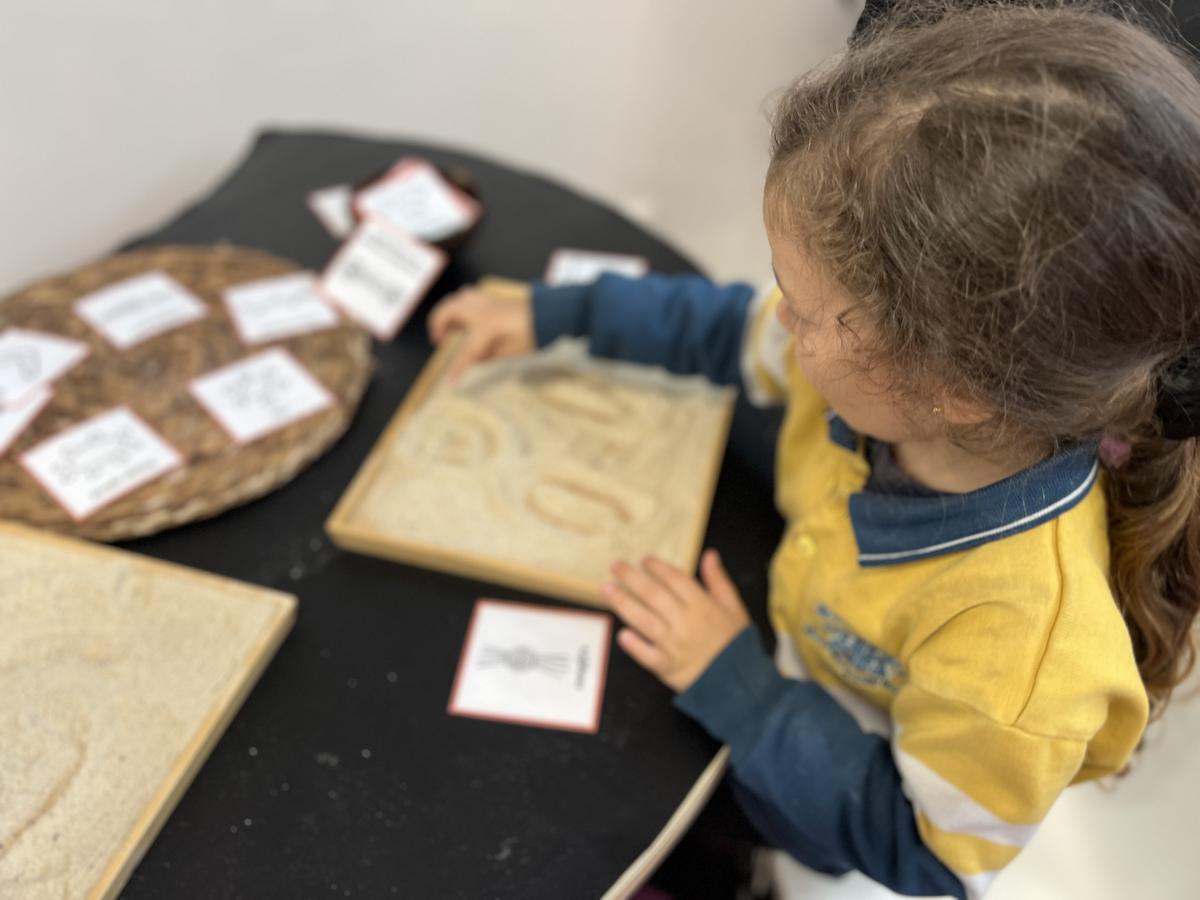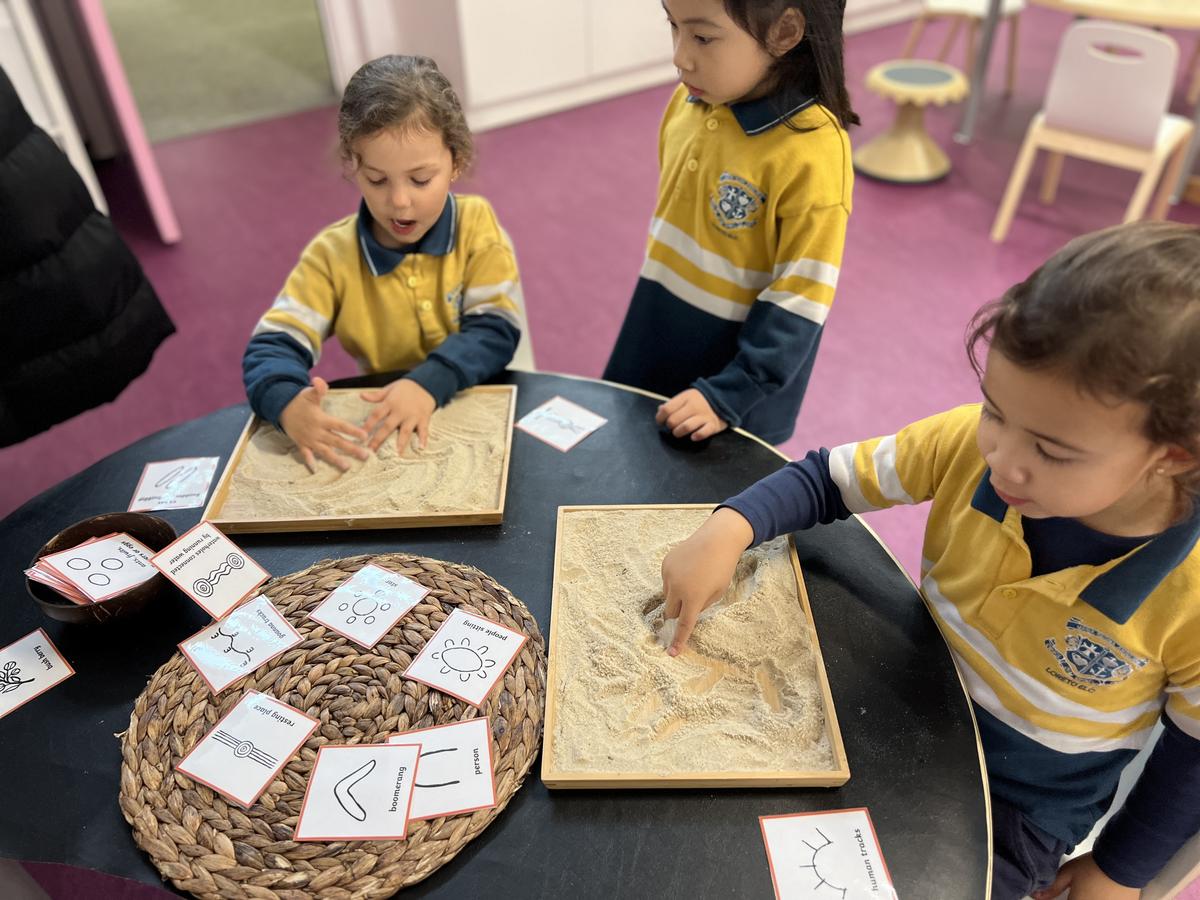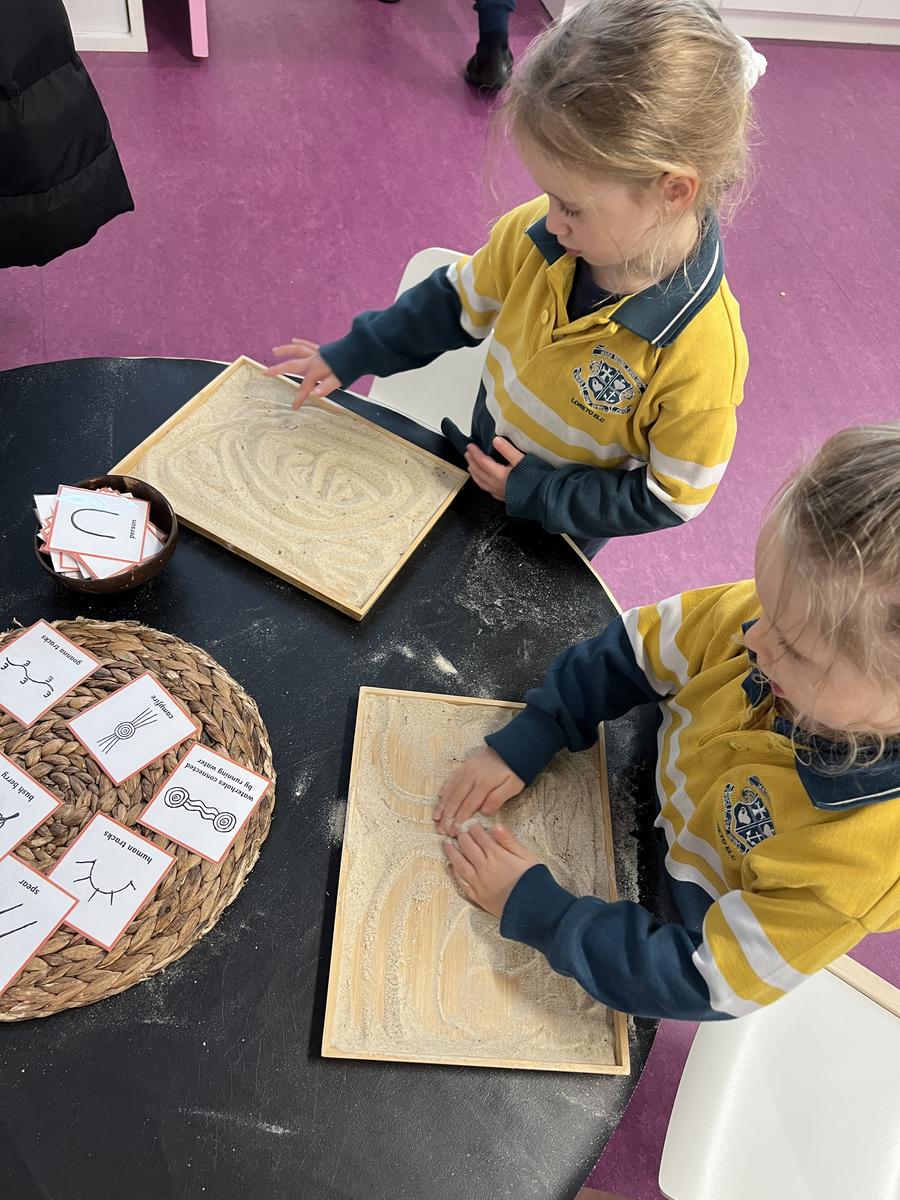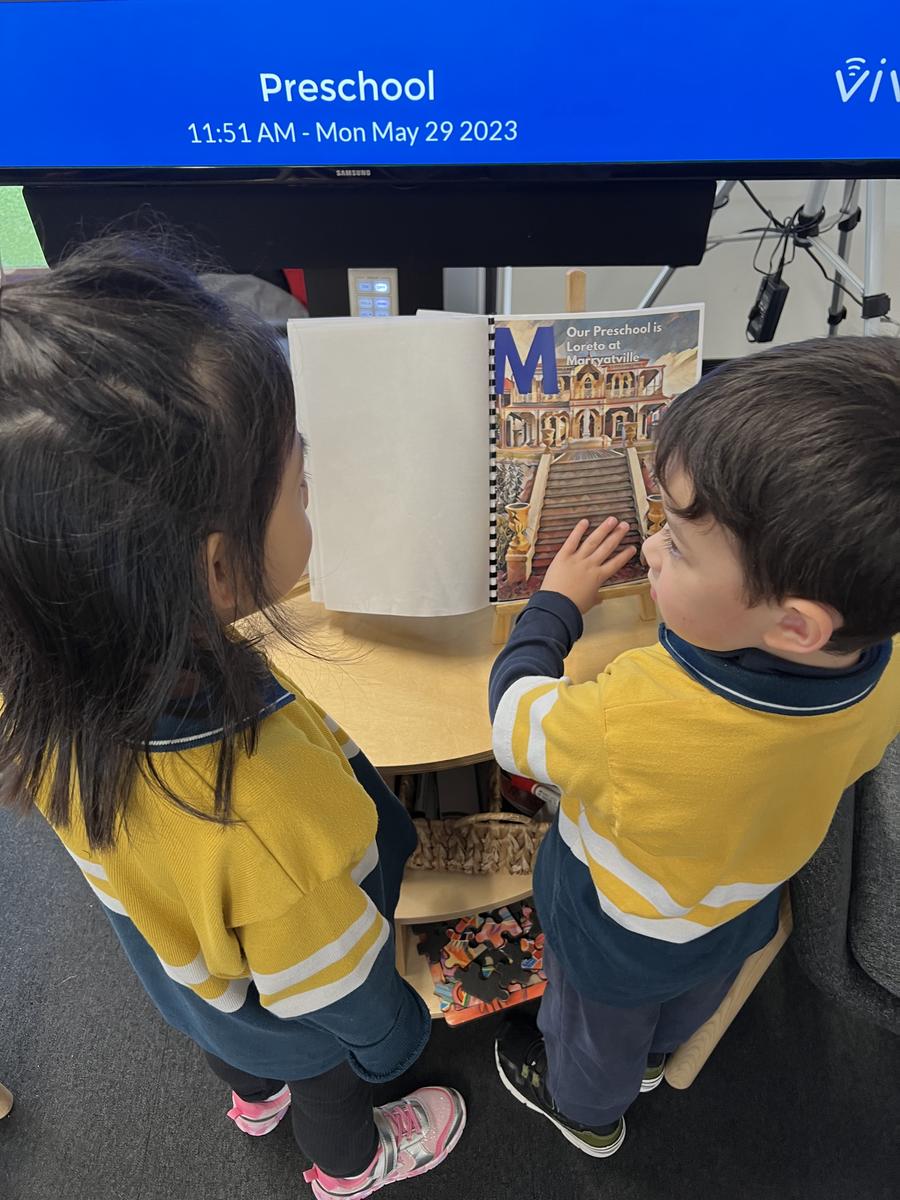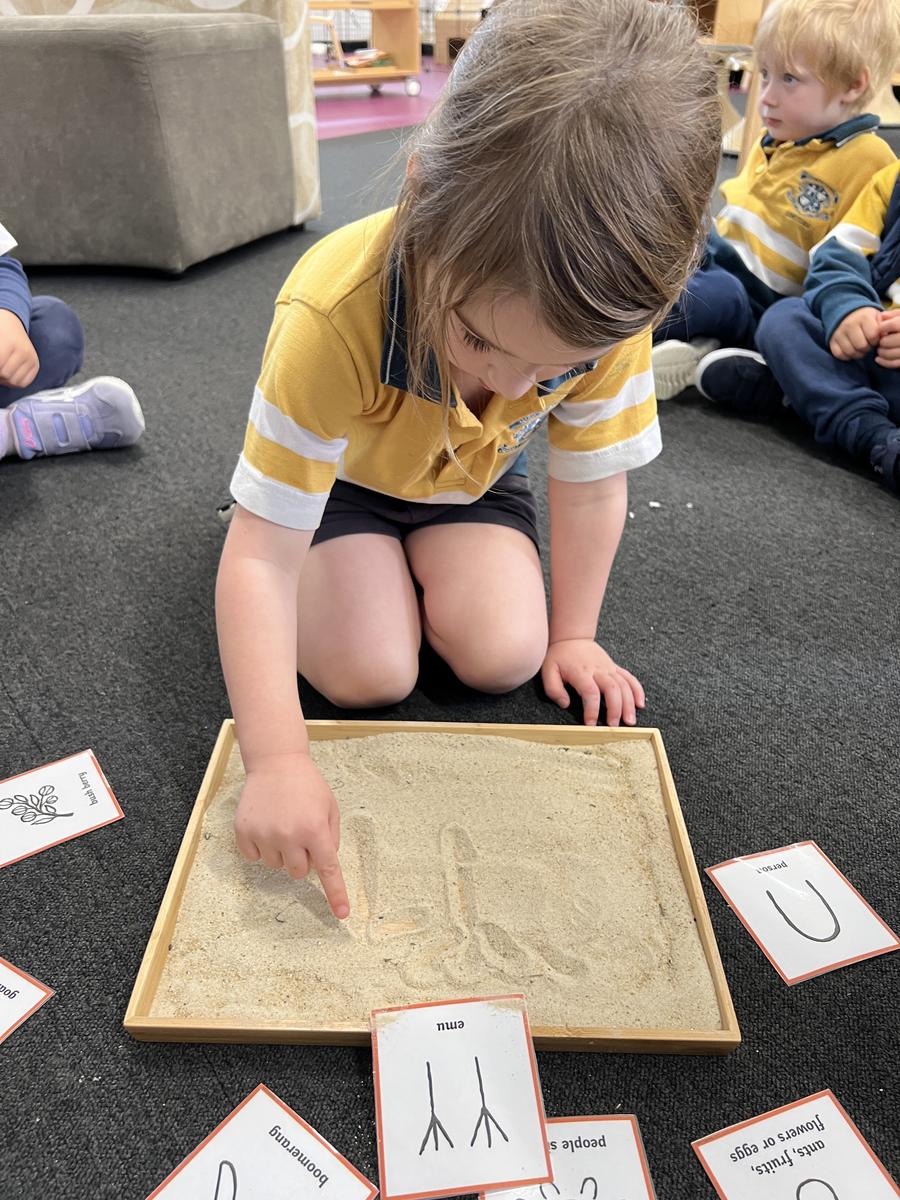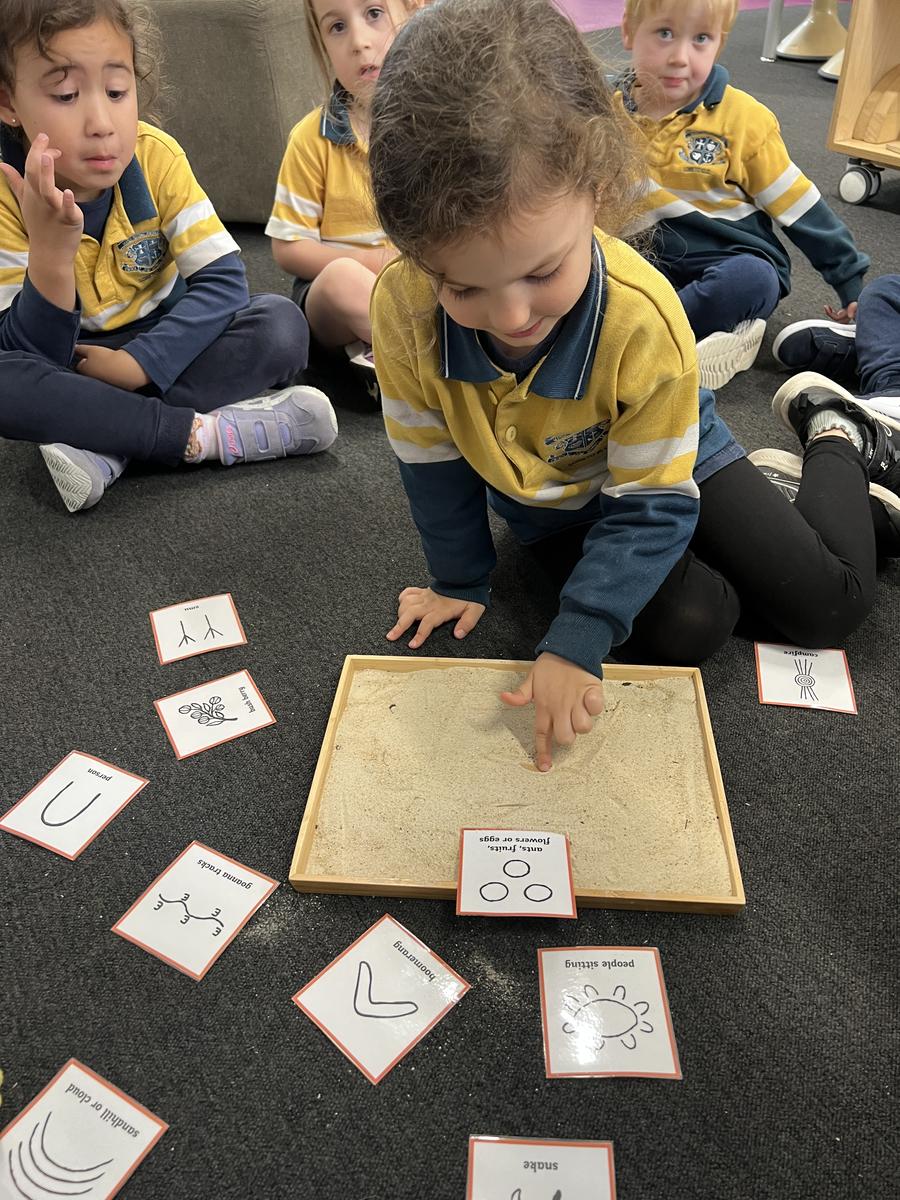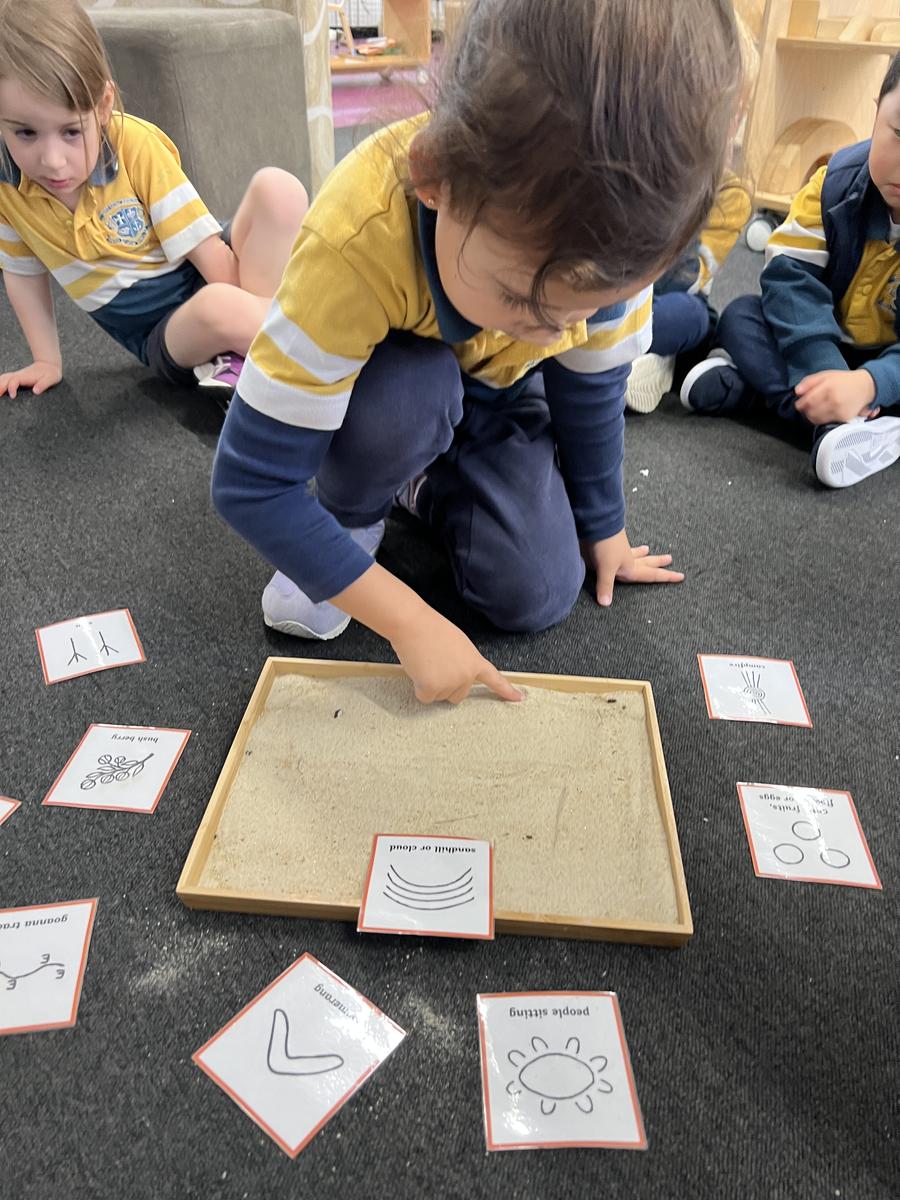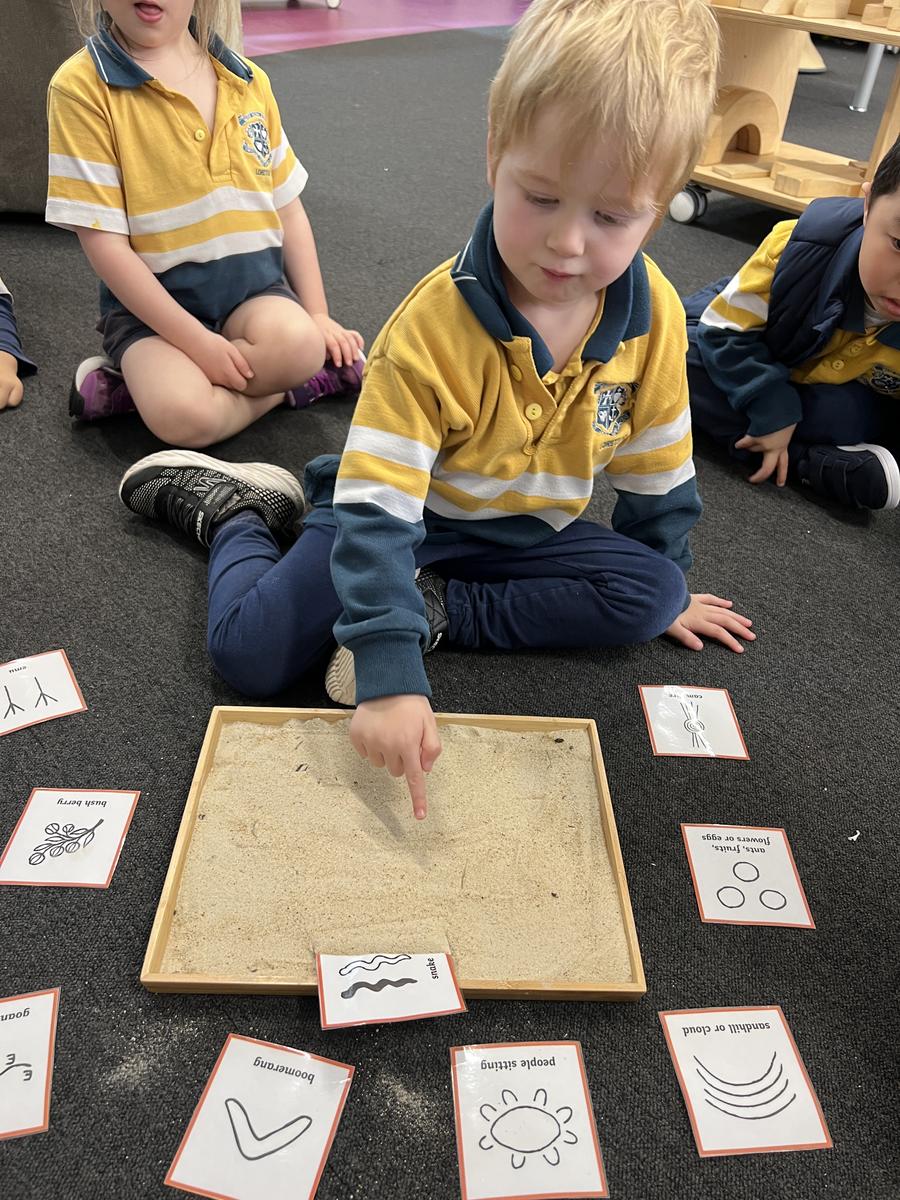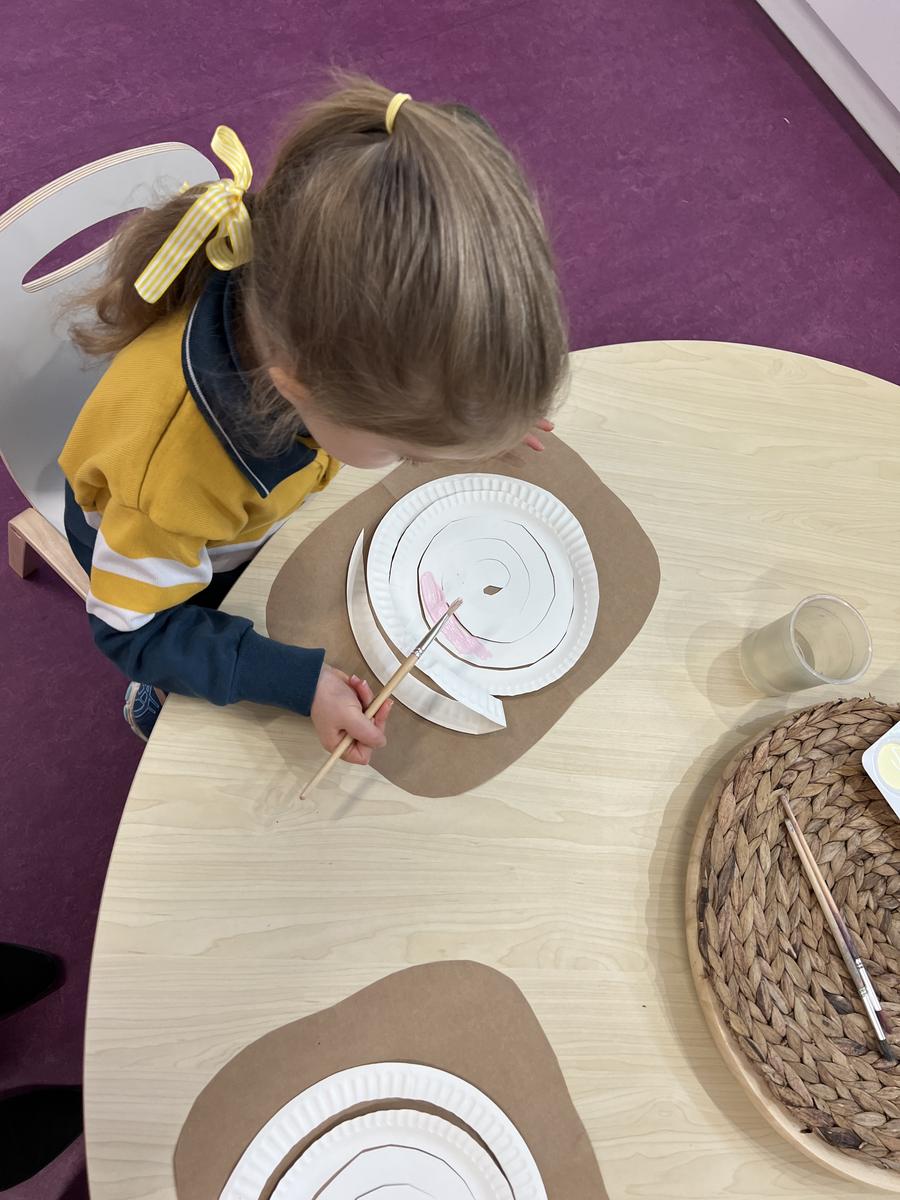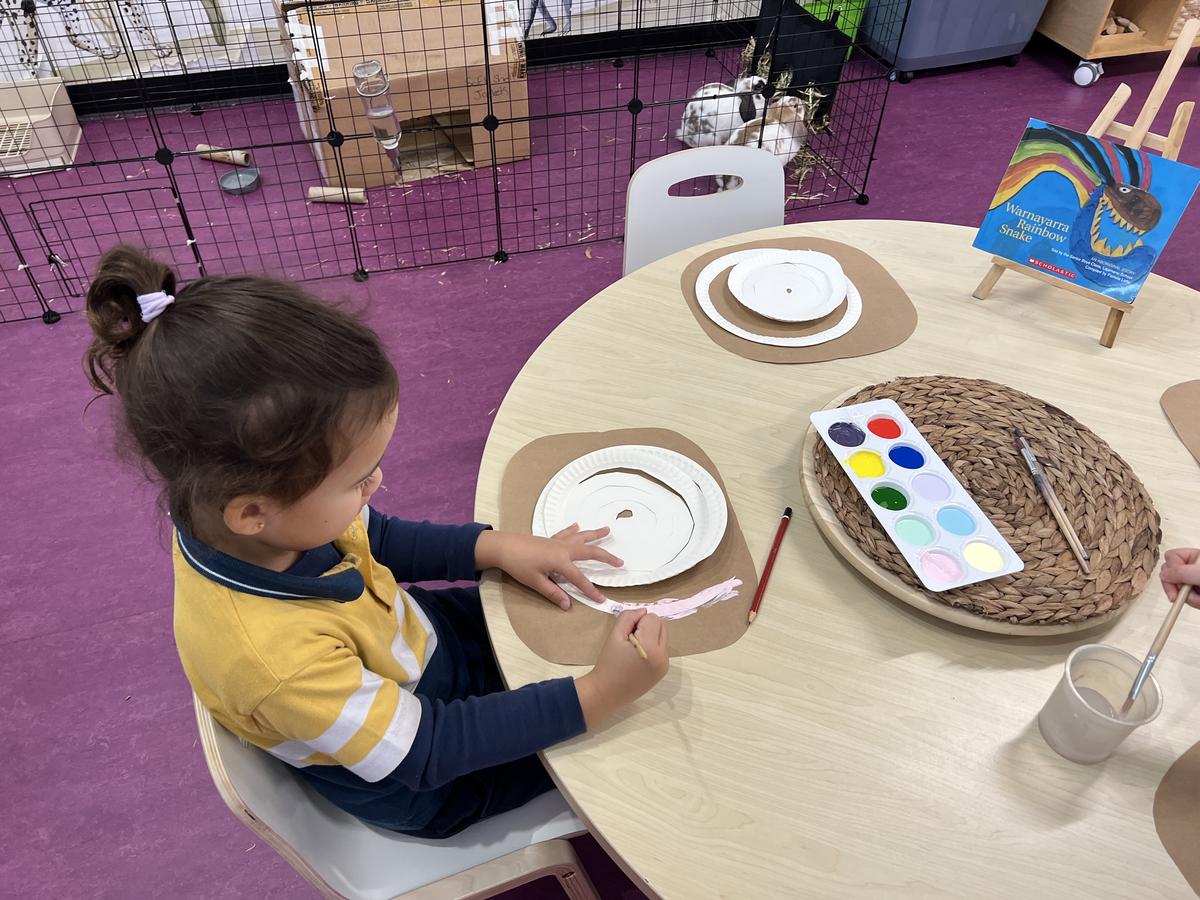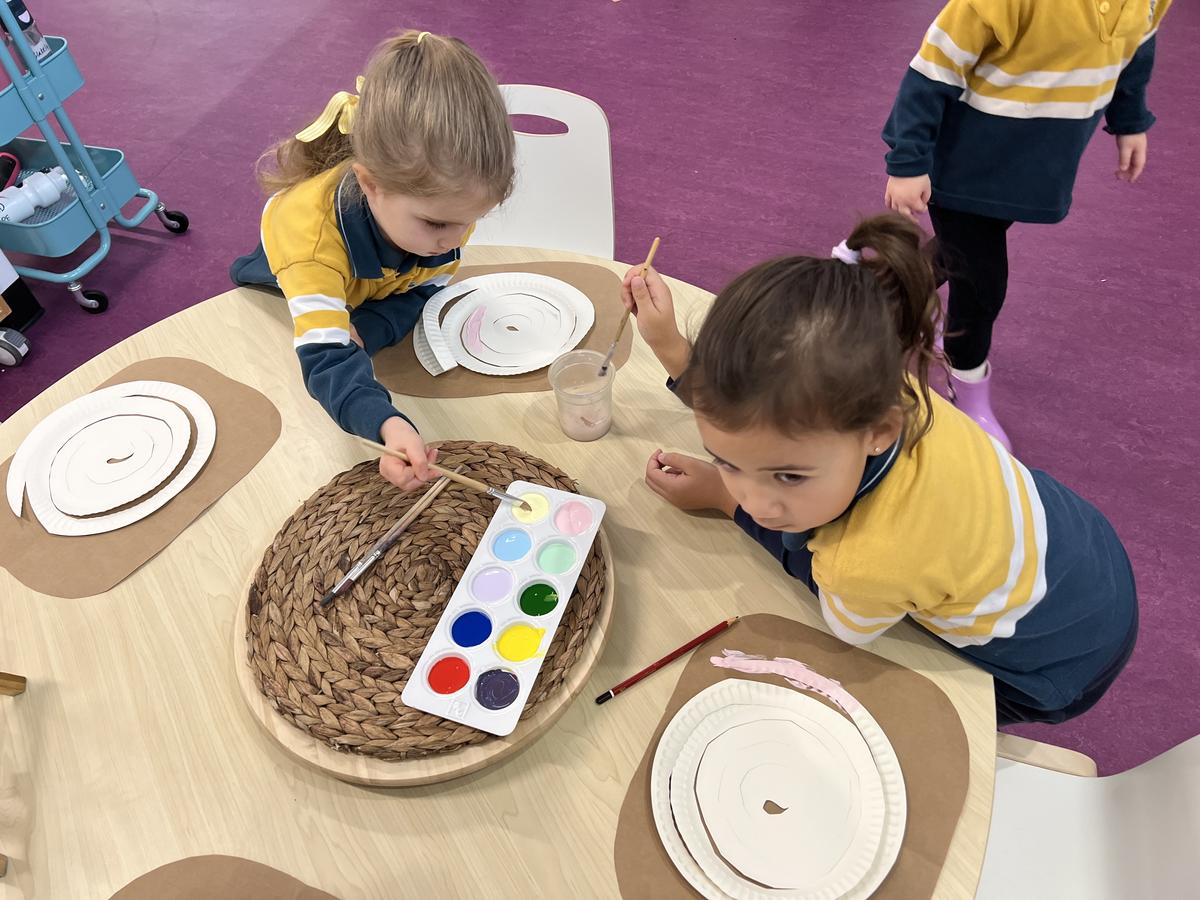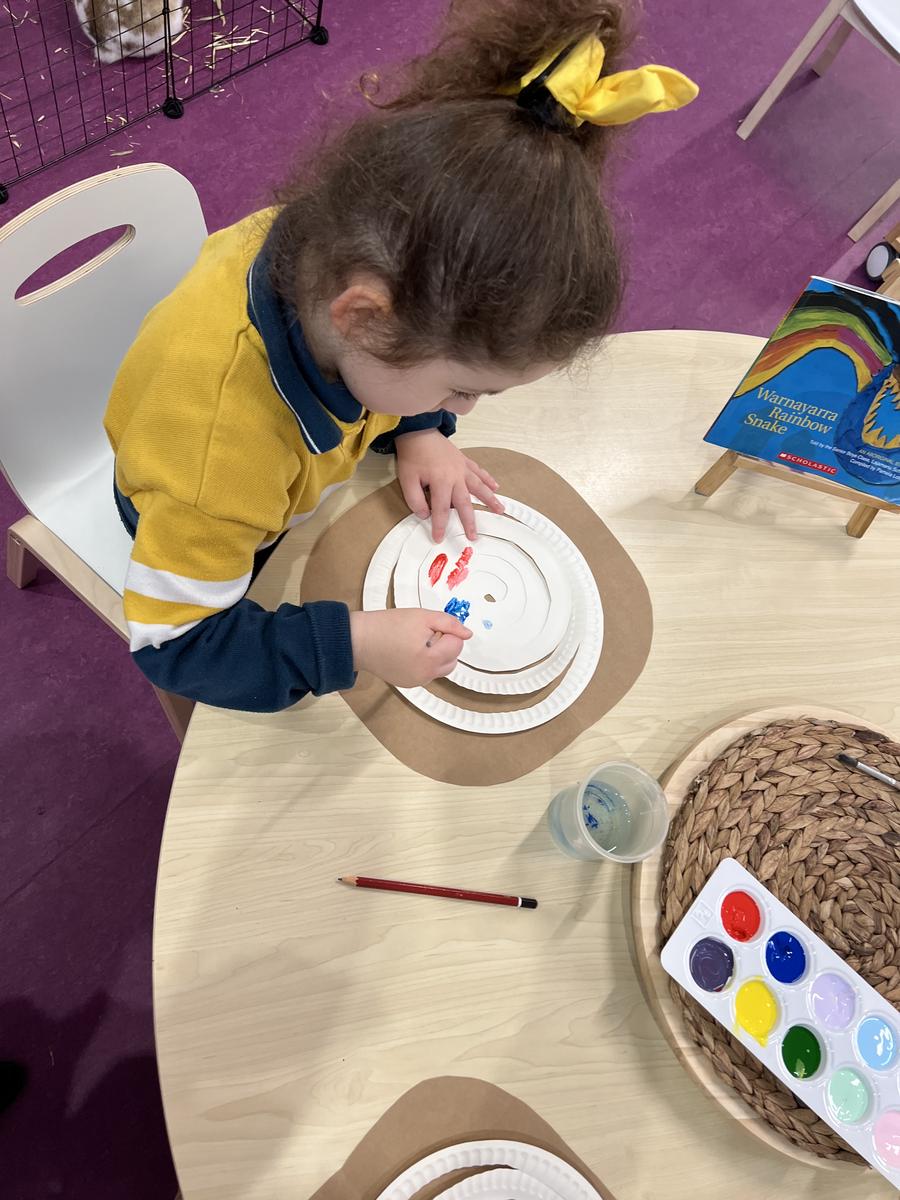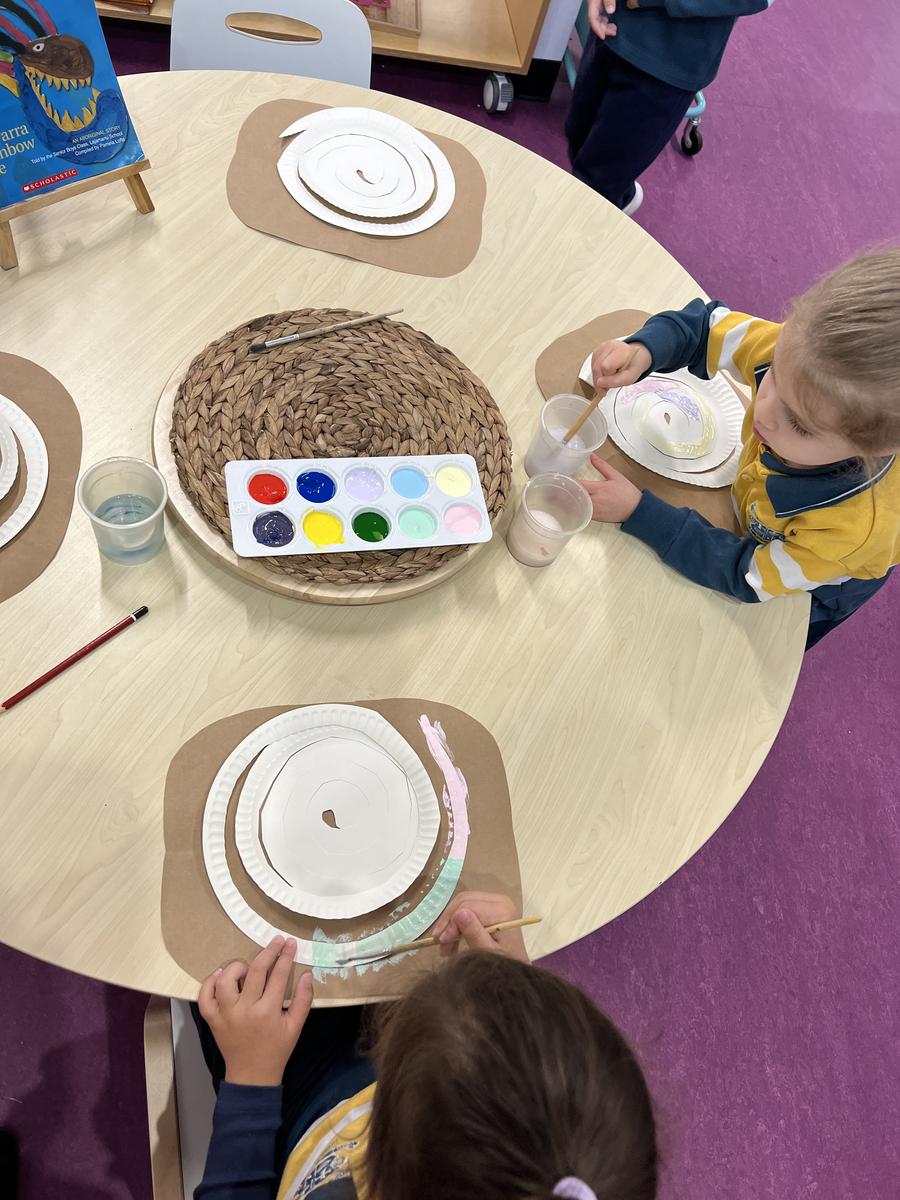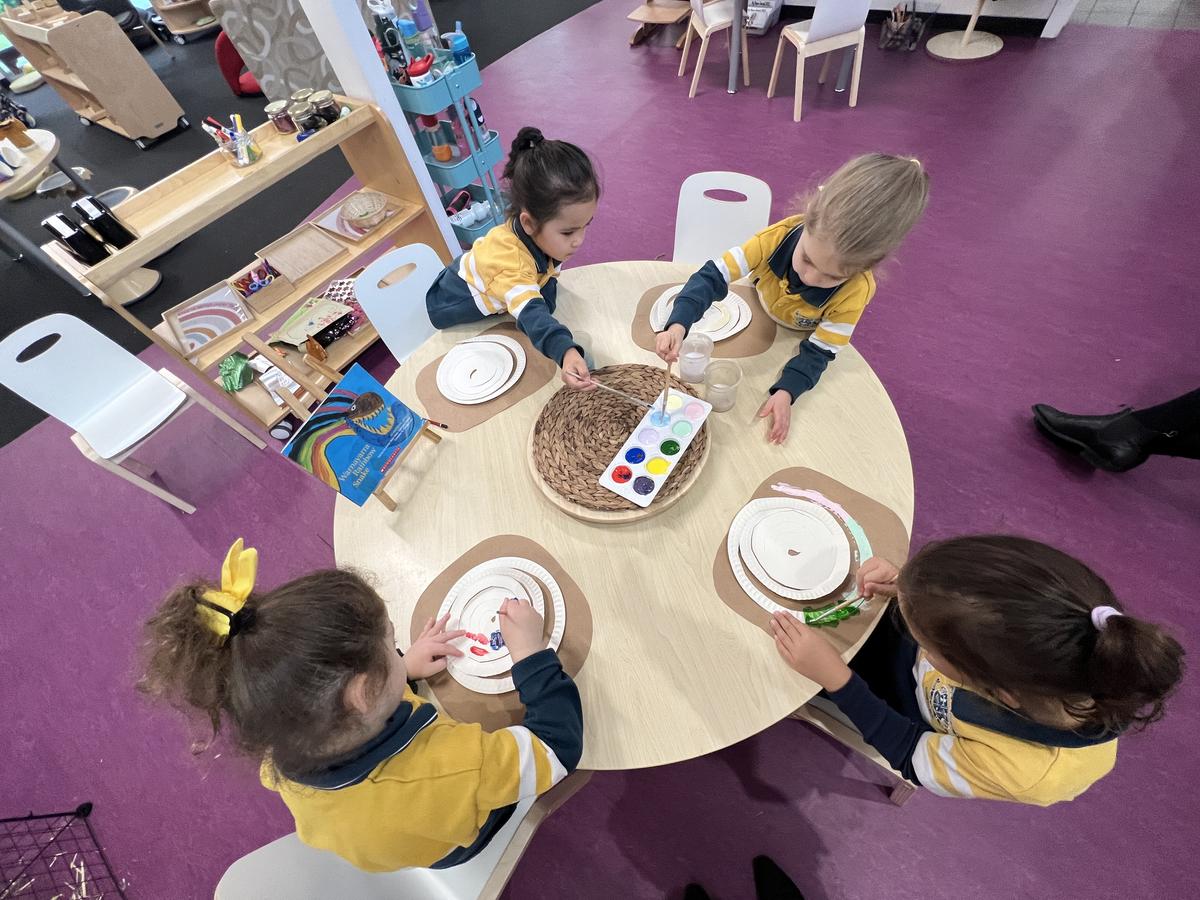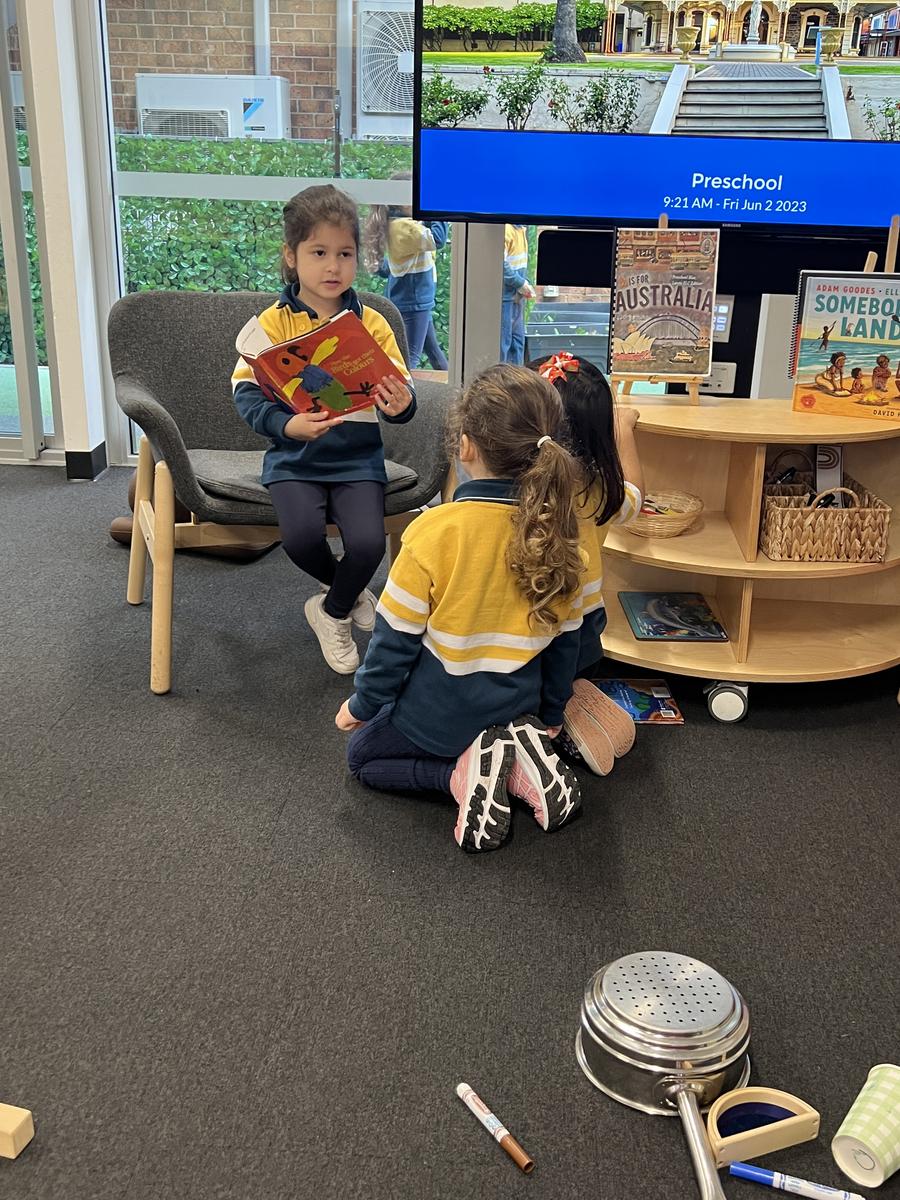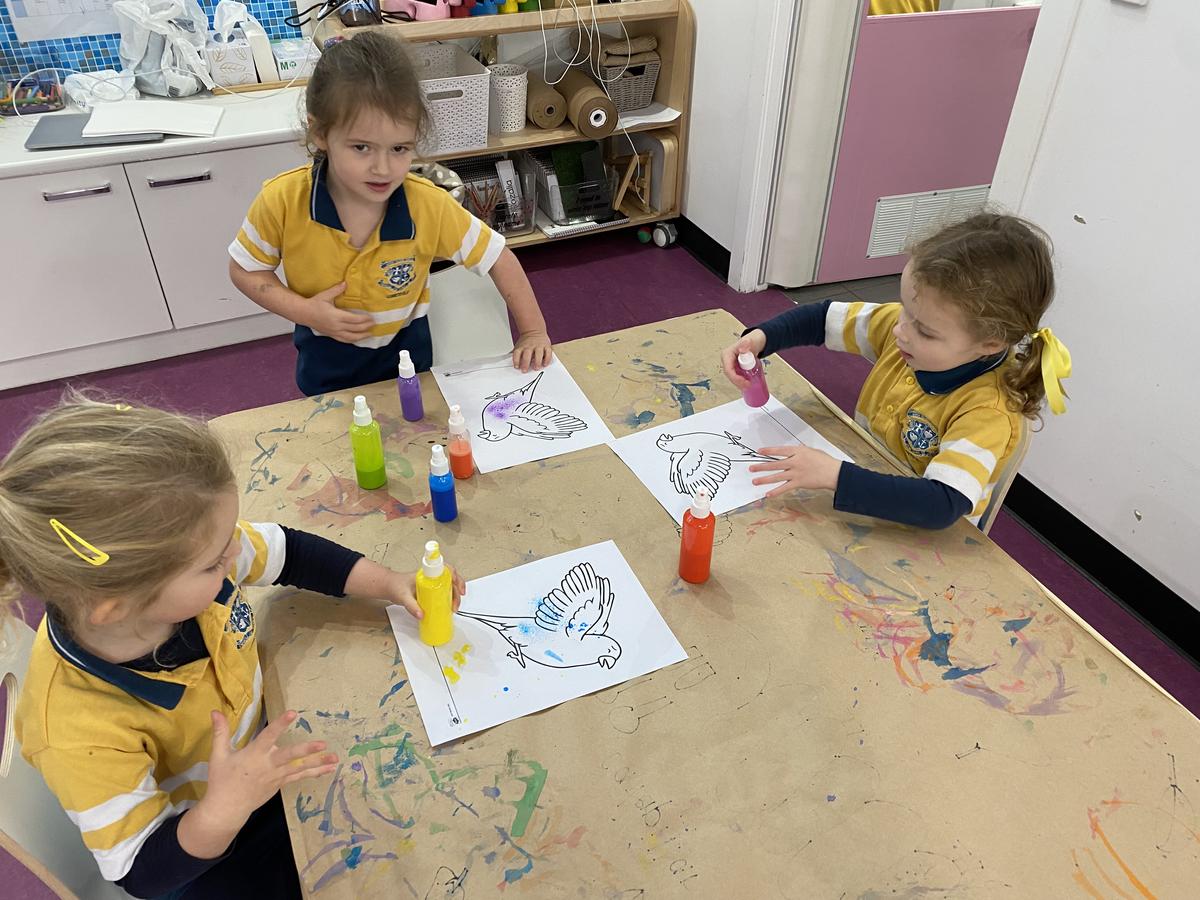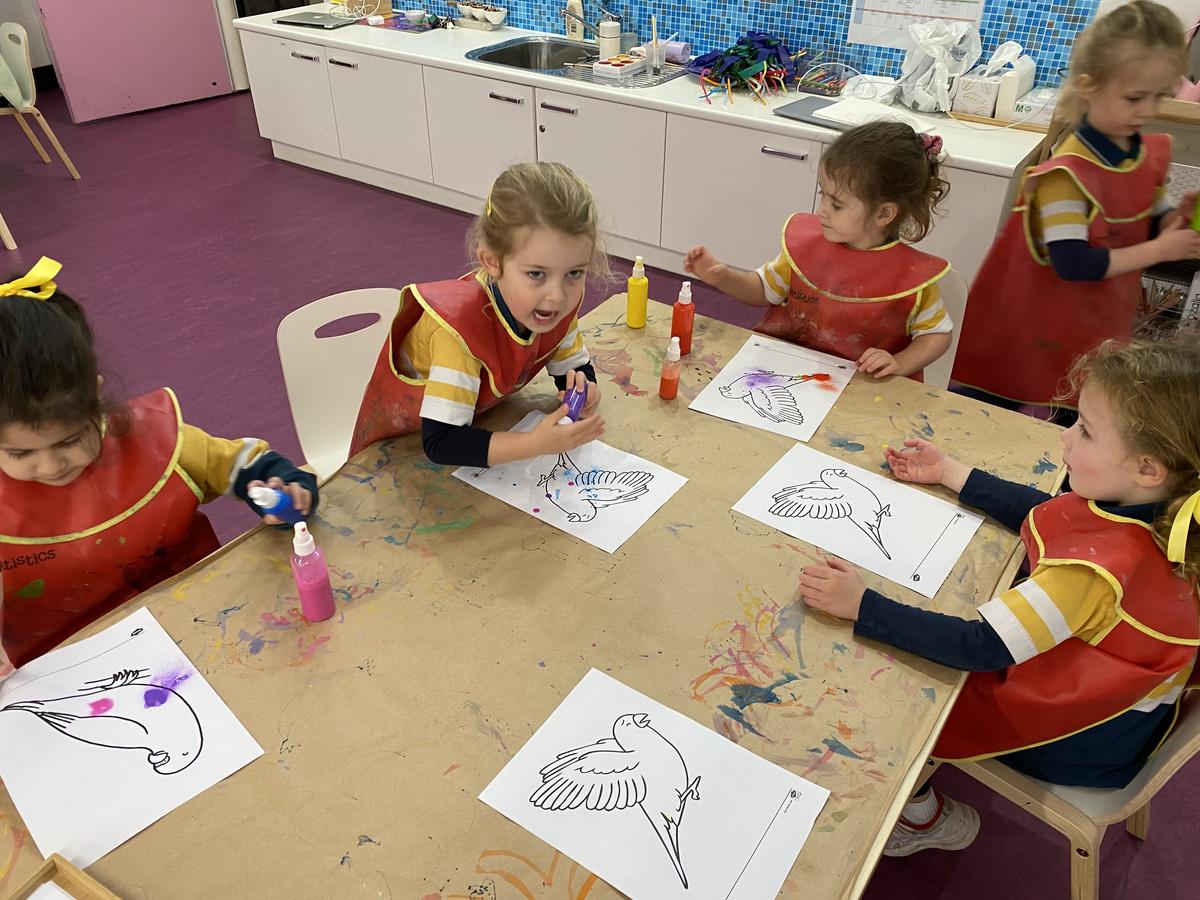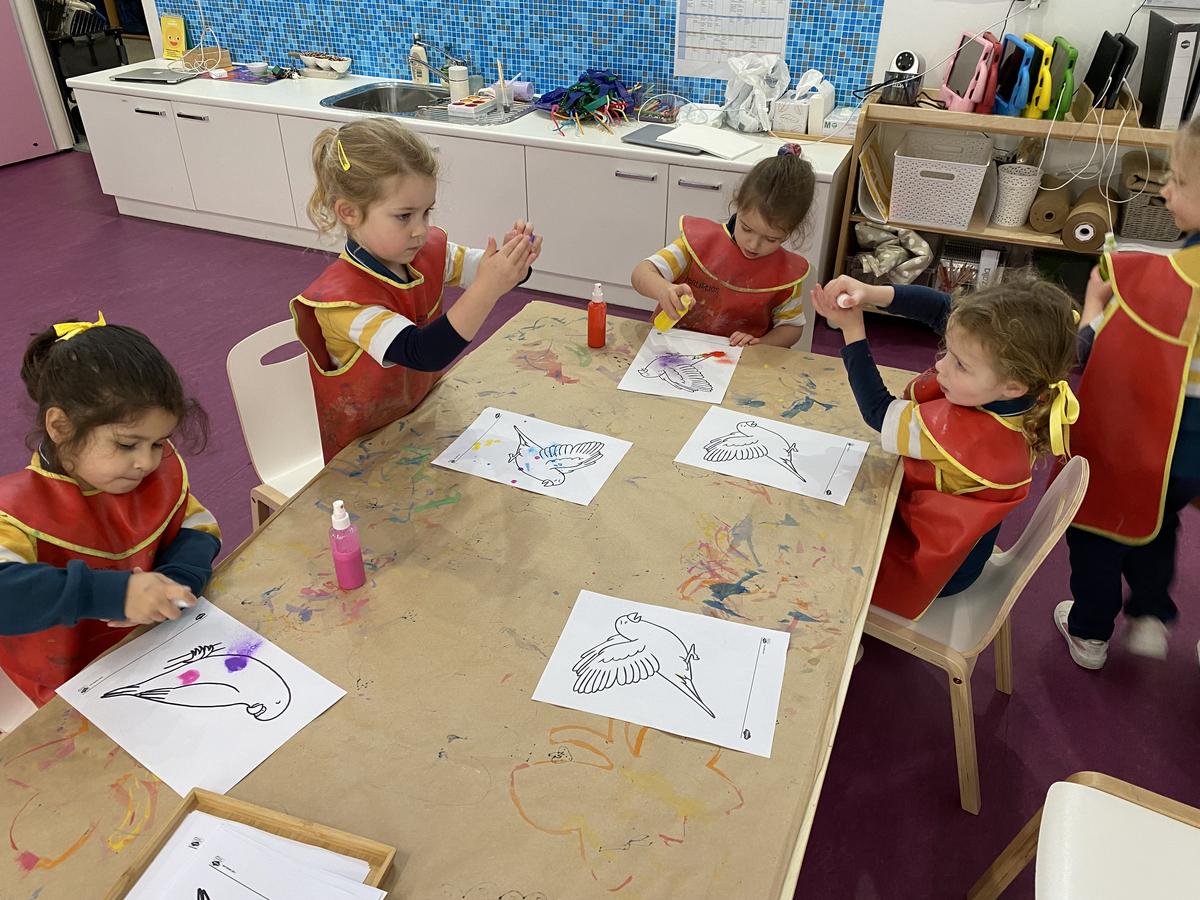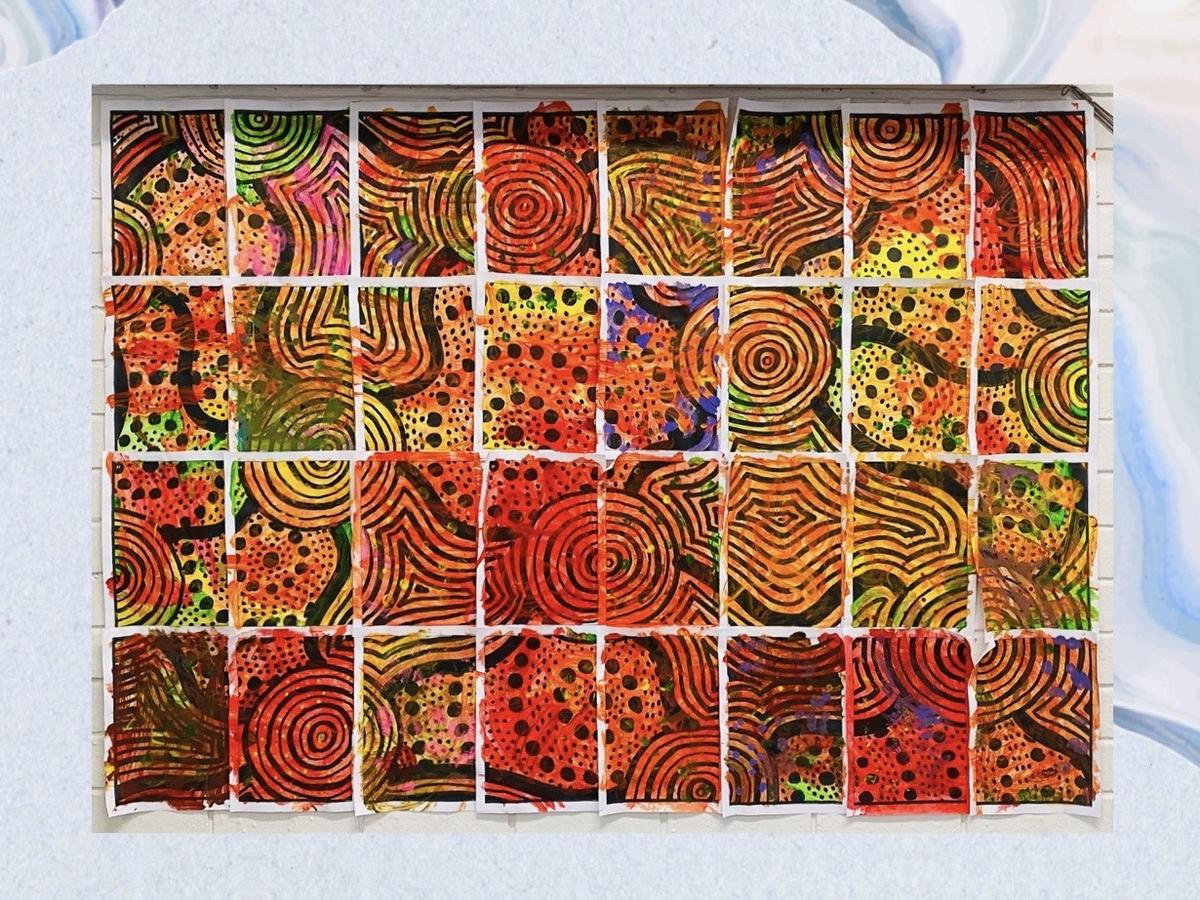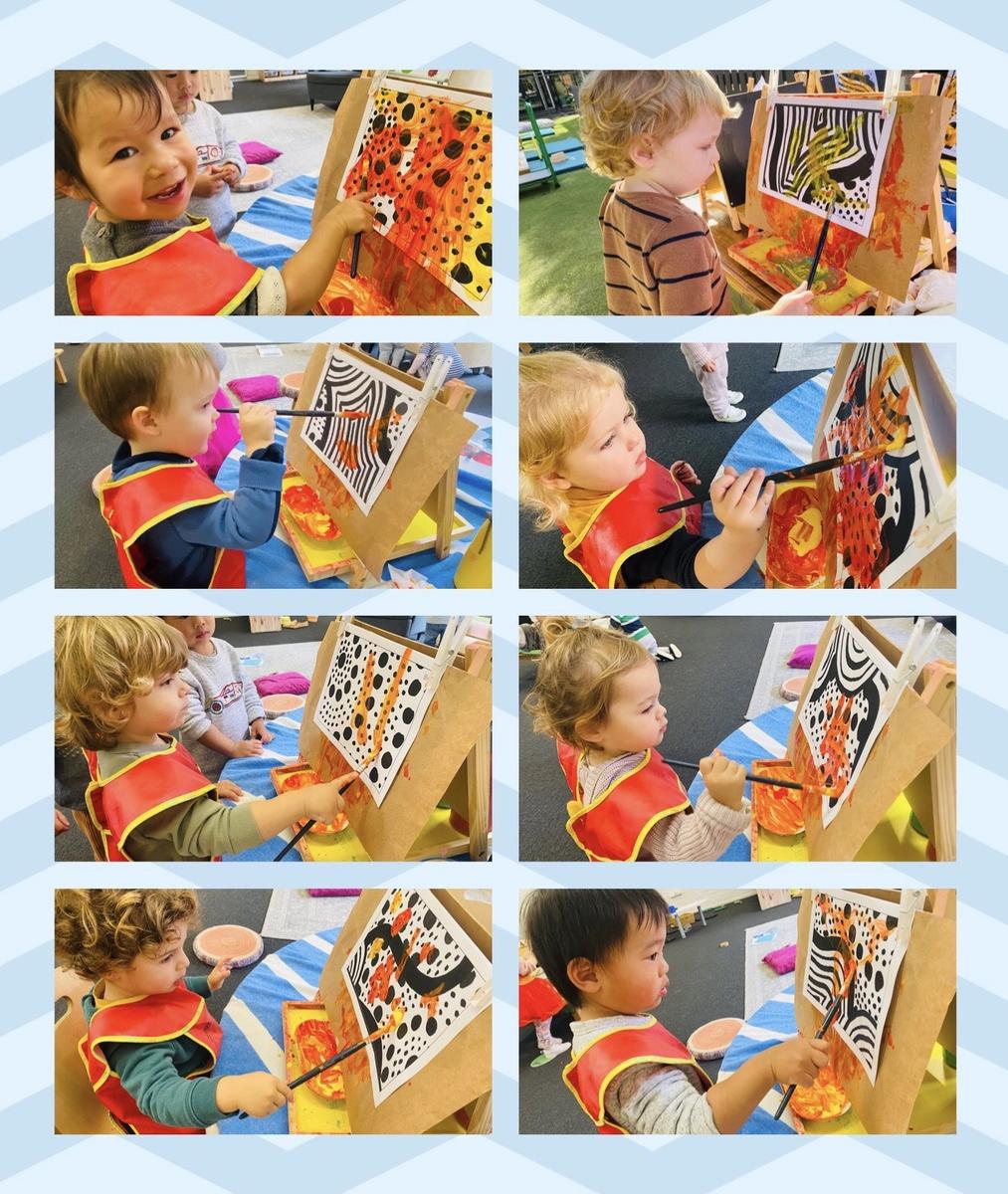Learning Across the ELC
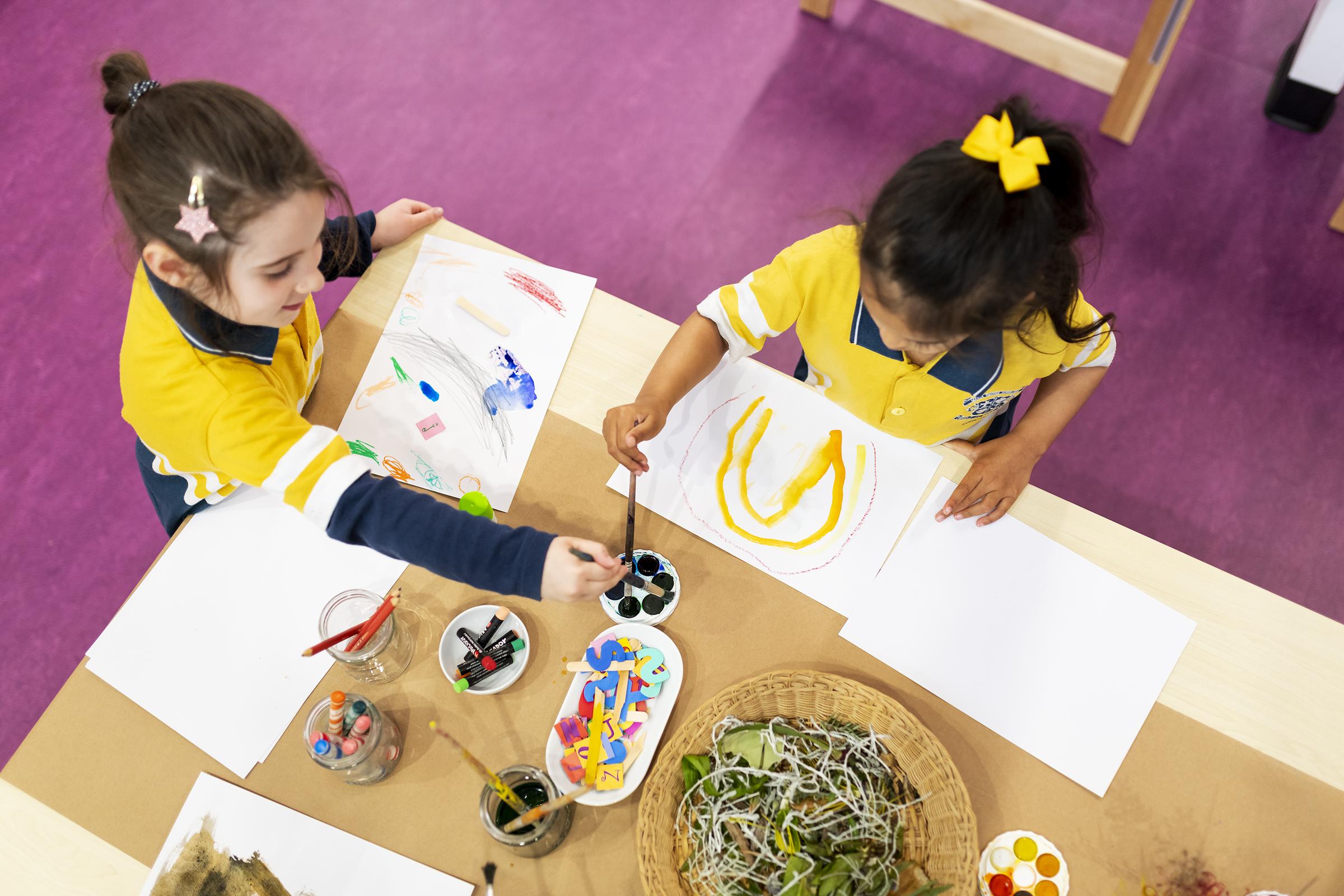
Discovering Space in Banksia Blue
To continue with our Inquiry 'What discoveries can we explore and investigate in Banksia?' and to combine with the children's emerging interest, this fortnight we have introduced 'Space'. The children were encouraged to engage in various activities that promoted curiosity about the universe, the world around them, foster creativity and lay the foundation for future scientific exploration. During our space theme, it wasn't just about planets. We discussed the stars, constellations, the milky way, and the children found it hard to believe that the sun is a giant star! This inquiry topic looked at various ways of learning, through hands on experiences and engaging in group learning and reading.
Space Diorama
Roll up your sleeves to create our solar system. The children eagerly awaited their turn as they worked together in small groups to paint two boxes for the solar system diorama. To foster sustainability and recycling resources, the cardboard packaging from the pull ups were used as the outside of the solar system. This created the dark space for the lights and planets to shine. See below the process of the space diorama.
Lemonade Stand
Last fortnight, you would have seen the children exploring the taste of lemons. To extend on the interest of this, we offered an experience of a lemonade stand. We had access to lemons, growing on site at the College. These were perfect for our 'lemonade' mixture which consisted of water and lemons…that's it! Busy hands were observed, stirring, and mixing the lemonade, ready to serve into cups.
Ms Gemma Francis
ELC Educator
Reconciliation Week in Banksia Gold
During Reconciliation Week in Banksia Gold, we continued our daily routine of unpacking the children’s understanding of an Acknowledgement of Country. We talked about ‘Kaurna Yerta’, about why the land is so special, about who was here first and why it is so important for us to say thank you (which we all say in Kaurna language and sign language). We also sing ‘Naa Marni Pudni’ each morning, to welcome everyone to join us in Banksia Gold. For our Library visit during Reconciliation Week, Mr S read us ‘My Mummy’s Special Secret’ written by Sally Morgan and Illustrated by Ambling Kwaymullina. We also went for a walk to the Mika Kurruru ‘Open Circle’ Indigenous Garden on the Loreto Senior School Campus. It was here that the children explored the space and sat in one of the circular shapes in the sun as we read the book ‘Tom Tom’ written by Rosemary Sullivan and Illustrated by Dee Huxley. ‘Tom Tom’ is story about a preschool child living in an Aboriginal community in the Top End of the Northern Territory.
Through the story we were able to make many similar connections to the lives of our Banksia children as we followed Tom Tom’s adventures, going to preschool, eating lunch with Granny Annie, his swims in the Lemonade Springs and having a sleepover with Granny May and Grandfather Joe. We then talked about how precious our families are. This experience also connected with our ‘We are all storytellers’ inquiry, as the story mapped out Tom Tom’s adventure, much like we have been doing with the bear hunt story. One of the best parts of this walk was the children noticing and calling out to show us the Aboriginal and Torres Strait Island flags on the way to and from the Indigenous Garden. During Reconciliation week we were also strengthening the children’s connection with Indigenous music, songs and language.
Our Sensory Room was filled with the powerfully emotive vocals of Geoffrey ‘Gurrumul’ Yunupingu and some didgeridoo instrumentals. Each morning we danced to the ‘Wombat Wobble’ by Johnny Huckle and Helen Moran and we sang the ‘One Little Finger’ song using Kaurna numbers.
Ms Ollie Lauder
ELC Teacher
Preschool Reconciliation Week
Throughout the week, we talked about the importance of Reconciliation Week and thinking about how we can support Indigenous Australians and their culture. We engaged with artwork to create stories with symbols and patterns, used spray bottles to create colourful birds, and paper plates to create Warnyarra, the Rainbow Serpent. We also learned new Kaurna words, singing along to Heads, Shoulders, Knees and Toes, counted in Kaurna and learned the name of birds in Kaurna language.
At group time, we shared stories by Indigenous authors and Dreamtime stories with the class. Here is a snapshot of some of our conversations throughout the week.
What land are we on?
Poppy K - Australia
Elicia - the Kaurna people
Tom - Kaurna
Jace - Adelaide
Millie - we also care of the land so we don't break it
Charlotte - we're on the Aboriginal people land
Billy – we say ngaityala, thank you
Izzy – they shared their land with us
Why are these animals at the start of the book?
Elicia - we might see them inside the story
Tom - a boomerang!
What do you do with a boomerang?
Tom - throwing
Poppy K - they're for throwing in the air and then they come back
Jace - you do this and you throw it (Jace mimicked throwing a boomerang)
Elicia - some boomerangs are so special because you just throw them and then they fly back on their own without pushing
Oliver - do you know, boomerangs, you can't throw them at people
We found out that all the animals at the beginning of the book are native to Australia.
Tom - and you can't eat, or can eat?
We learned that you can eat most of the animals in the book, but some people aren't allowed to, because they need to make sure that we don't eat them all. Their job is to look after their special animal totem.
Elicia - you might not want to eat ducks or pigeons because the beak is really long and it might poke your throat
Oliver - you definitely can't eat a snake
Jace - I eat snakes
Oliver - but do you eat venom snakes that spit venom?
We talked about how people can safely catch snakes and then just eat the meat, but not the venom.
Poppy K - why are they on that rock?
People were cutting down trees.
Oliver - that's not really nice if you're cutting down the tree when you're not even using it
Tom - because trees are helpful, they grow up food and they're also windy and they keep us from getting super hot
Elicia - some trees are lemon trees and some trees are plum trees. They can be fruit trees. Some trees help us to be strong when you just pick up fruit from them
Poppy K - if we need some fruit from the trees, then you might need that tree
Tom - you can't cut down bushes, because bushes have food on them. So, bushes are helpful too, so we can't cut them down. So, if you cut down trees, then bushes can help them
Odette - I can see people
Chloe - I can see the people on the rock
Will - I can see they're cutting down the trees
Elliot - to build things
Amelia - I see trees
Elliot - umm there's a lizard
Jack - I can see footprints
Billy - I can see tracks (this was something we looked at on the symbol cards on Monday)
Izzy - I can see a hedgehog
Elliot - there's an echidna
What did they use the berries and plants for?
Elliot - they used them for medicine Lylah - she's holding the baby and looking after it
Billy - I can see a mother looking after her baby
Blakely - do you know what? The trees are so sad because we have no berries and things on them now but we need water on them
Billy - but wait, what about the rain? Plants can grow with rain
Blakely - but what are our houses made from? Brick! So then water can’t come in to water them
Amelia - they paint their faces too
Will - well I wish I was the Aboriginal people, because then I could see what Australia was like back then
Ms Emily Quigley
Preschool Teacher
Reconciliation Painting
In Week 5, Wattle children engaged in celebrating and learning about the traditions of the Kaurna people. One of the engaging experiences that the children participated in was aboriginal art painting. They had the opportunity to explore the rich cultural heritage of the Kaurna people by using traditional colours such as red, black, and yellow. Through this hands-on experience, the children were able to express their creativity and develop an appreciation for the art forms and storytelling traditions of the Aboriginal culture. By acknowledging the Kaurna people and engaging in activities like painting, the children were encouraged to build connections and understanding, fostering a sense of respect and reconciliation within the early years setting.
Manasi Kewlani
ELC Team Leader
Child Care Subsidy
The Child Care Subsidy is increasing from 10 July. Most families using early childhood education and care will get more CCS. Some families previously not eligible for CCS will now get it.
If you already get CCS, you don’t need to do anything. If you think you may become eligible, lodge a CCS claim with Services Australia.
Learn more at childcaresubsidy.gov.au

